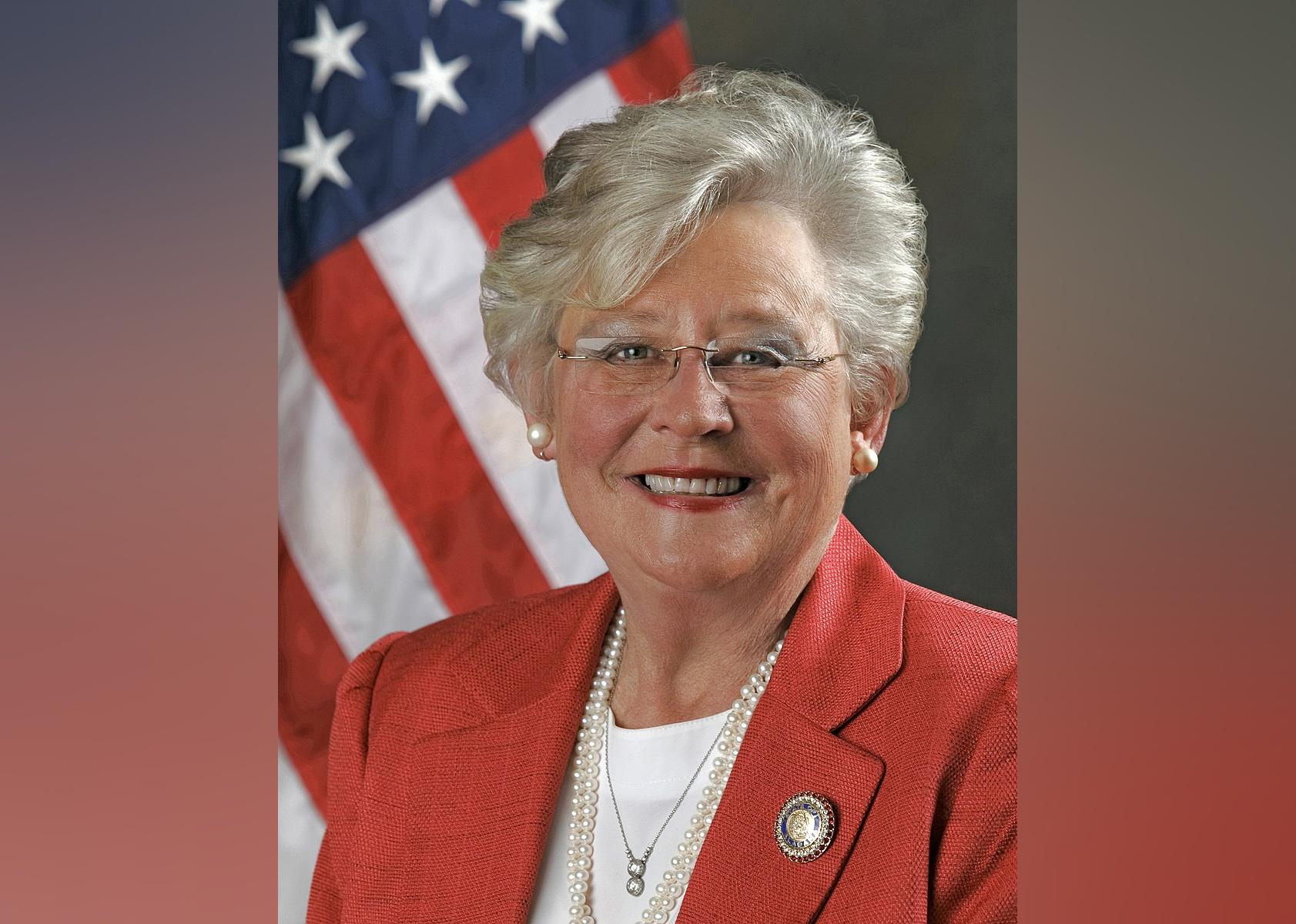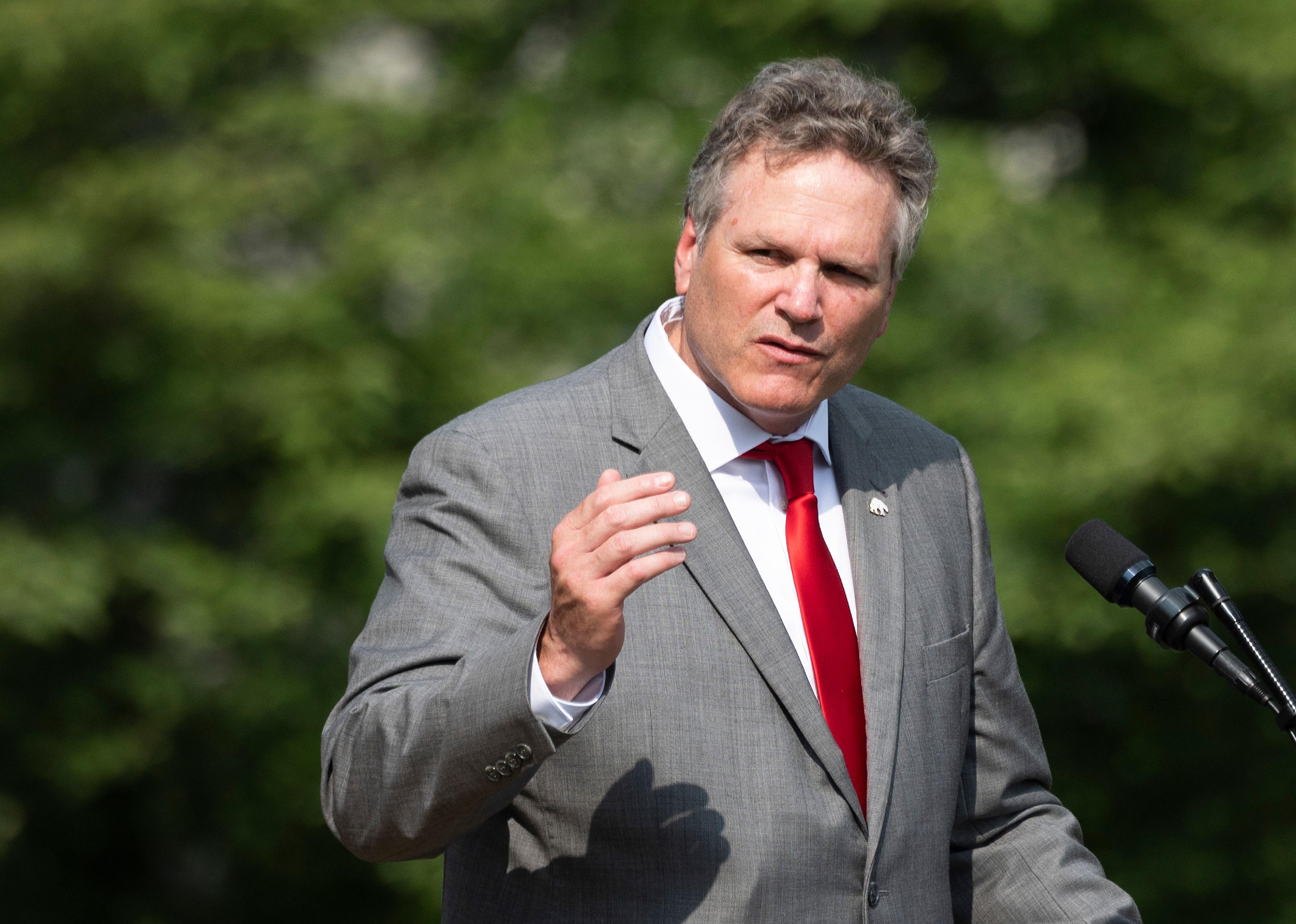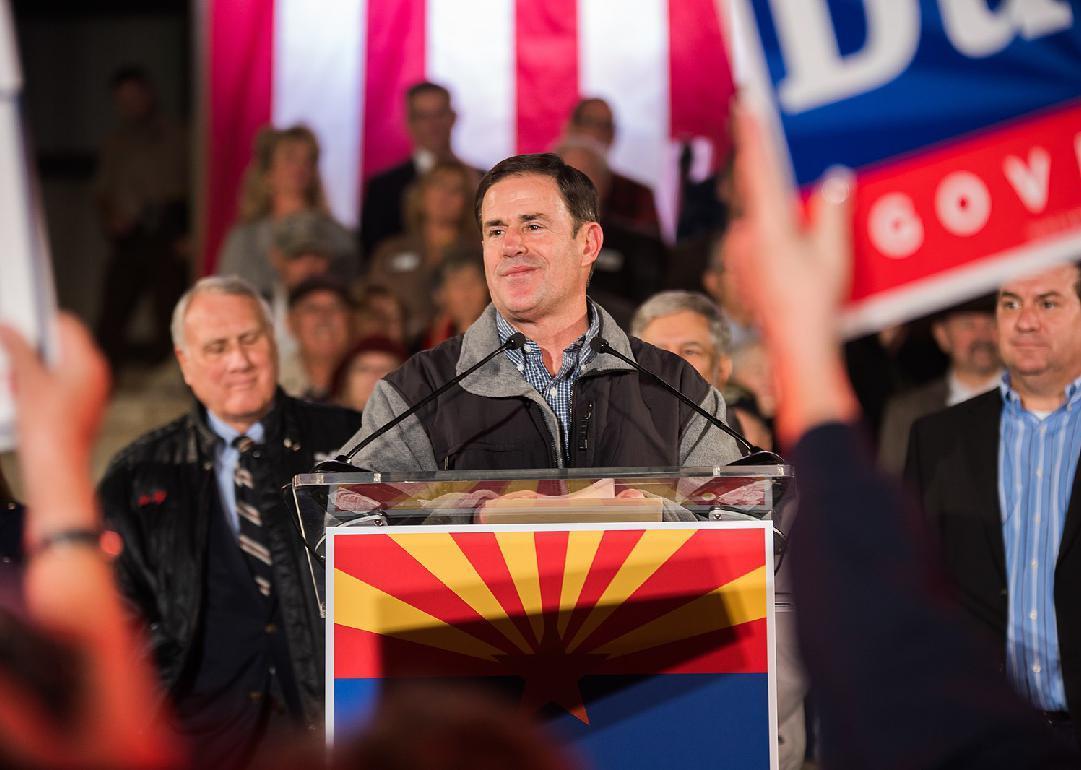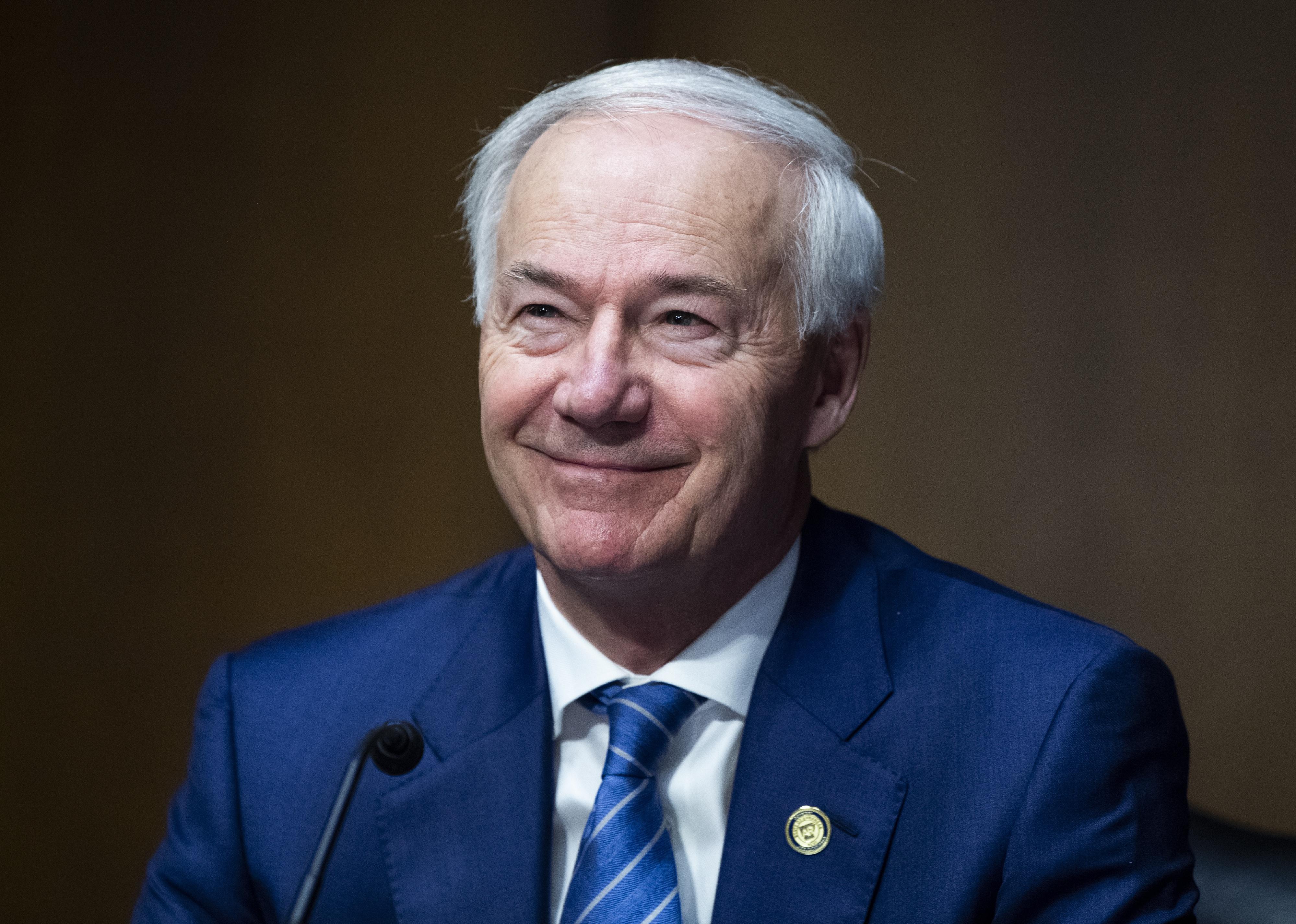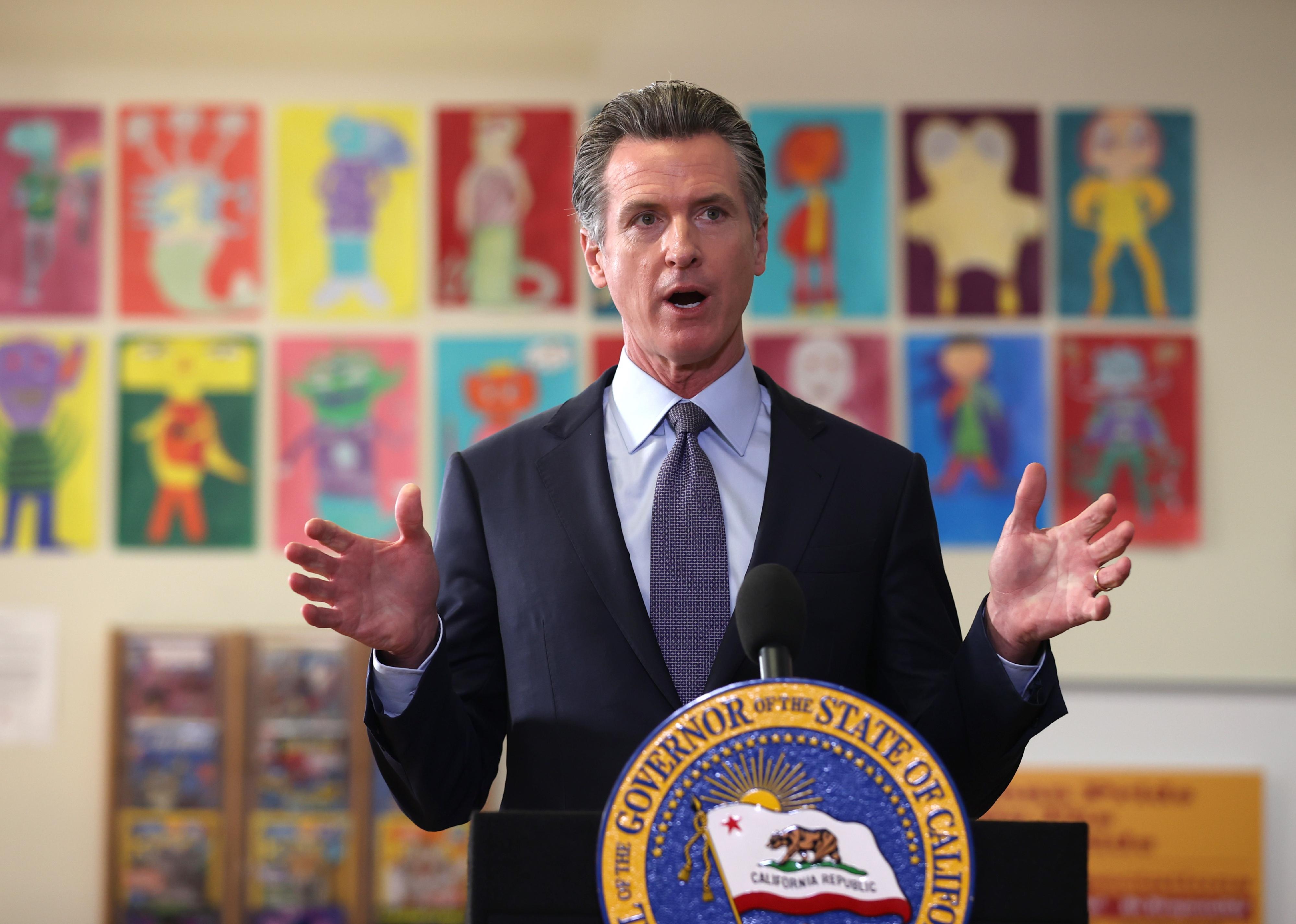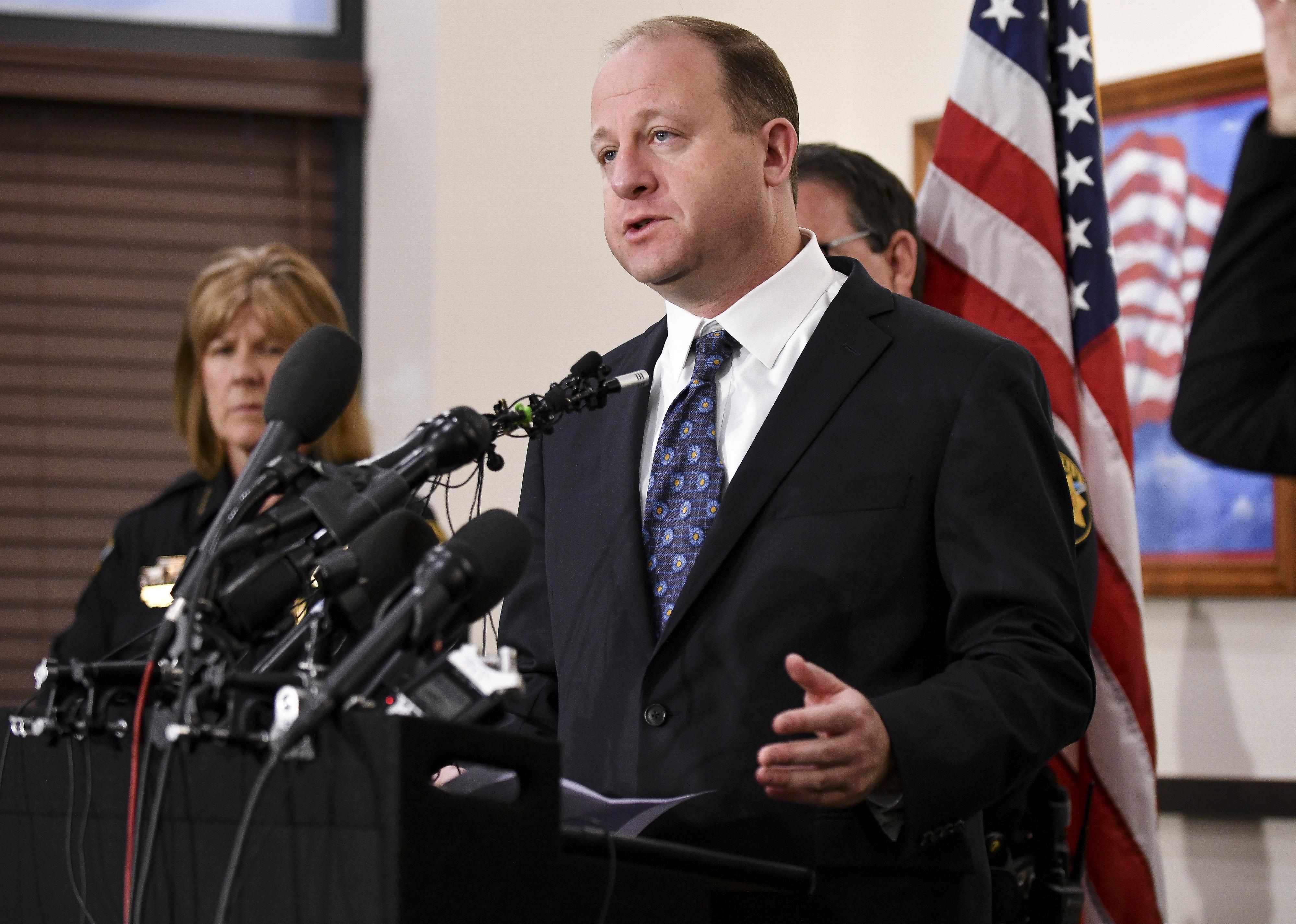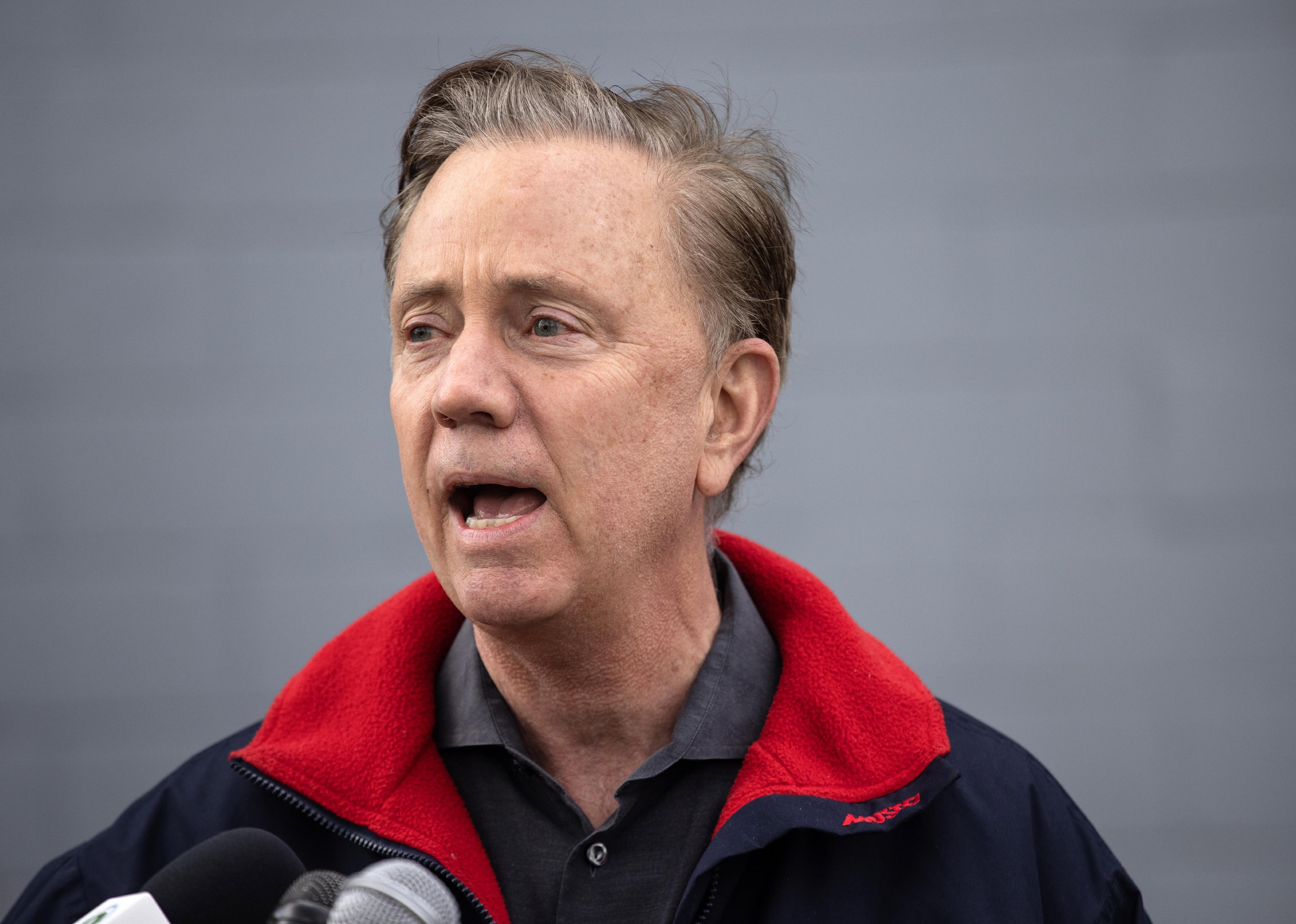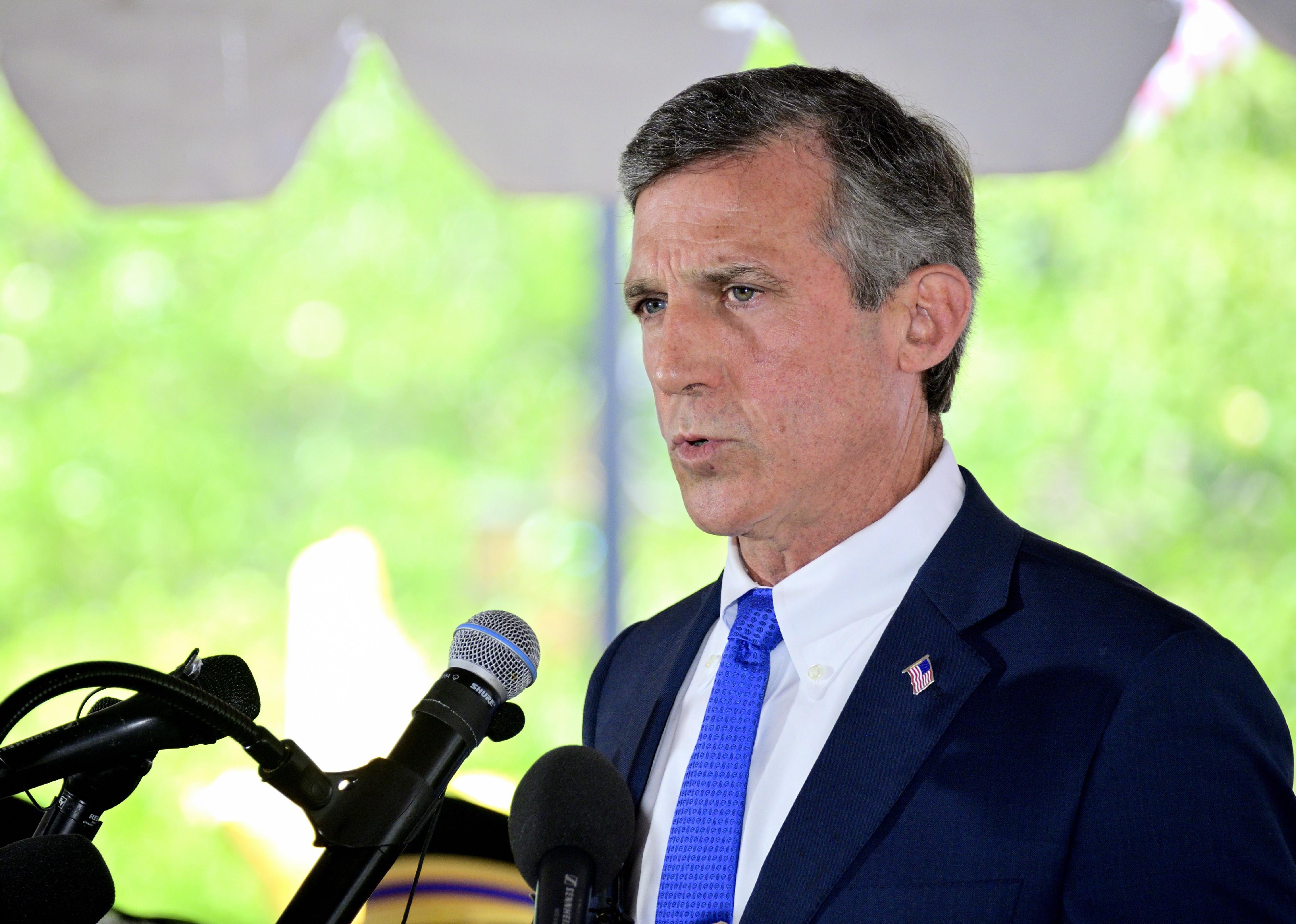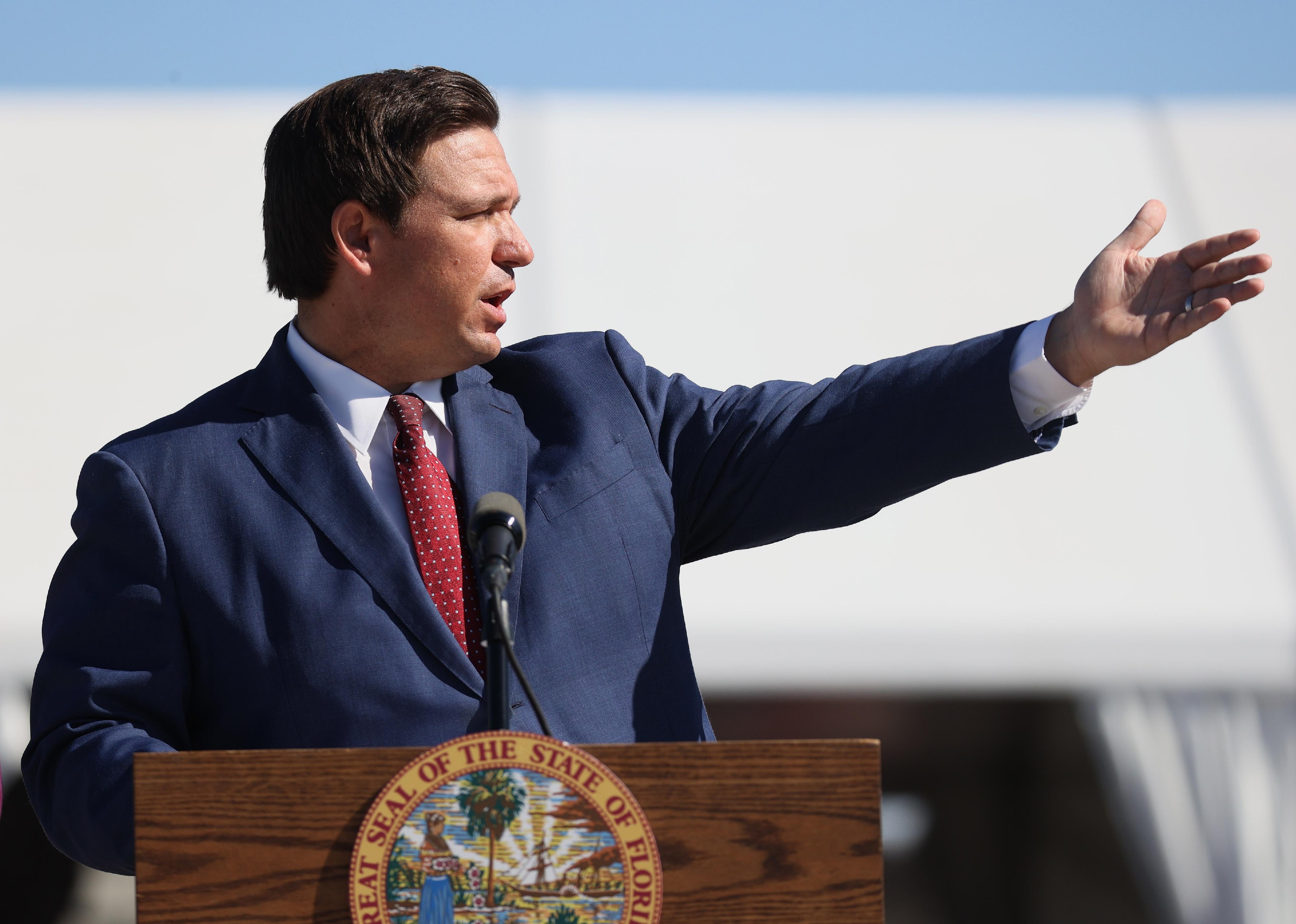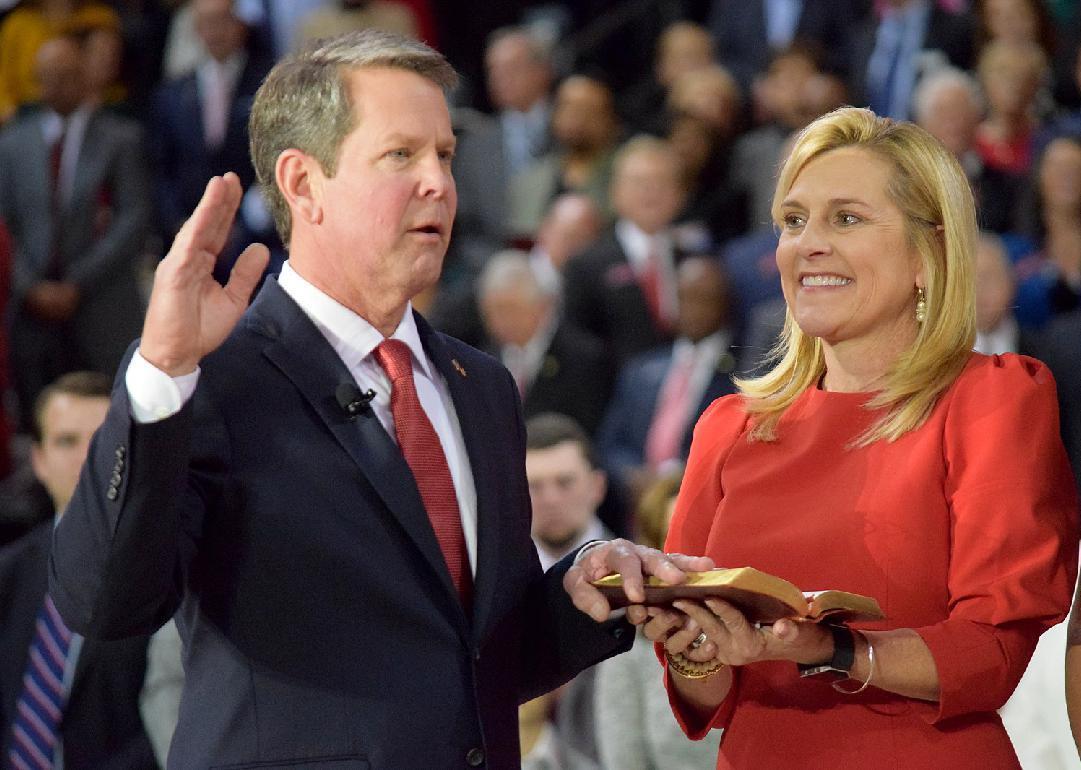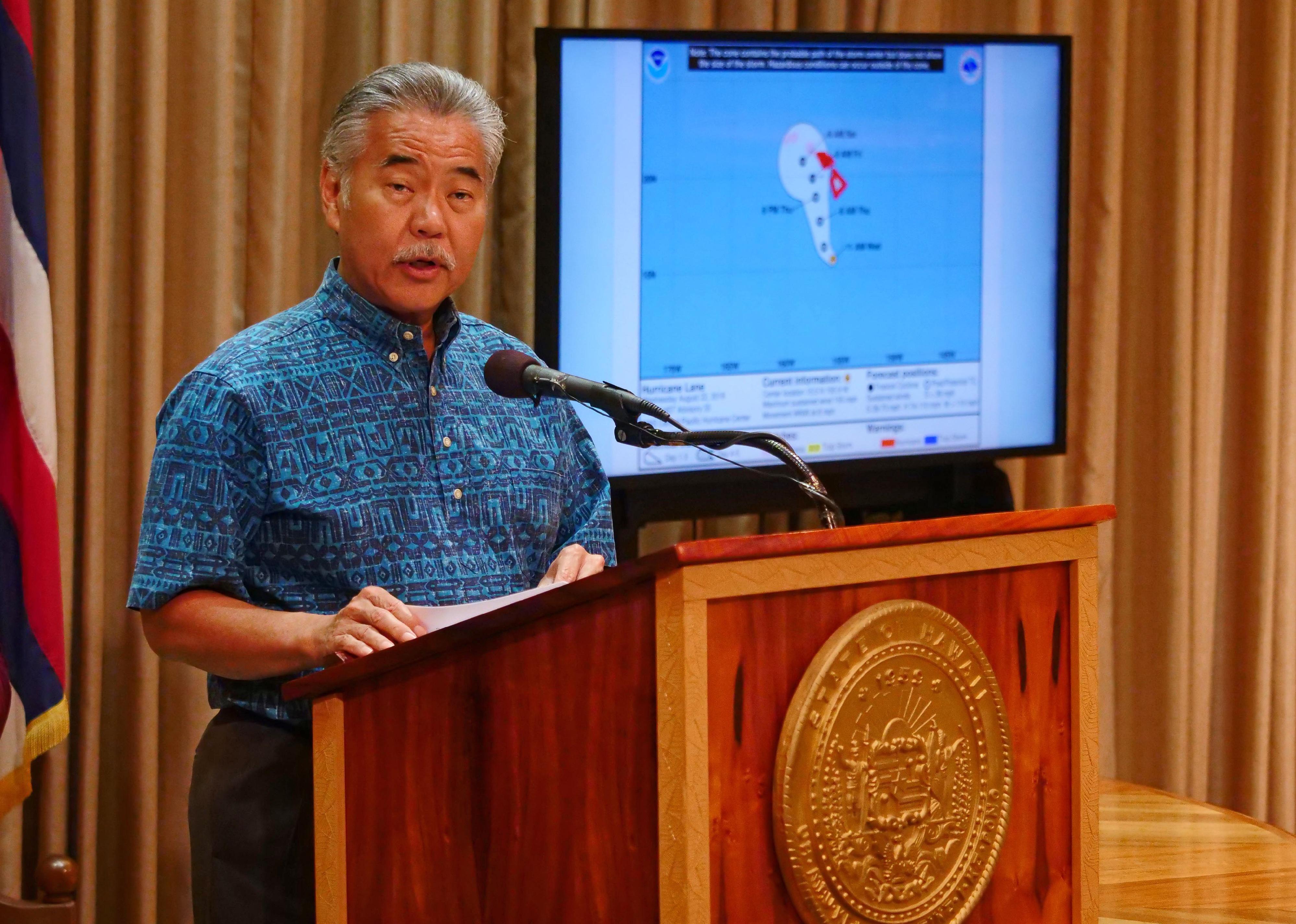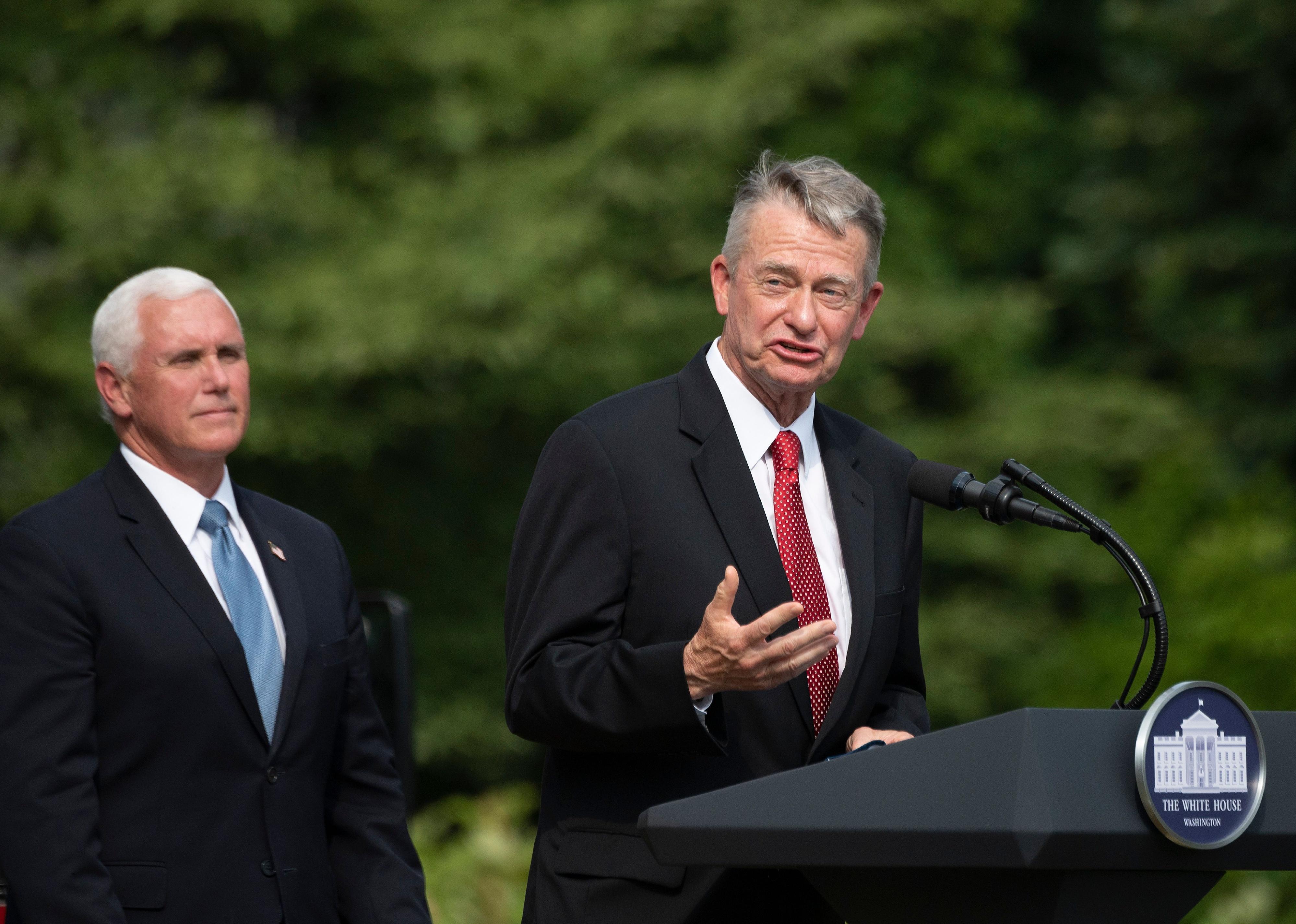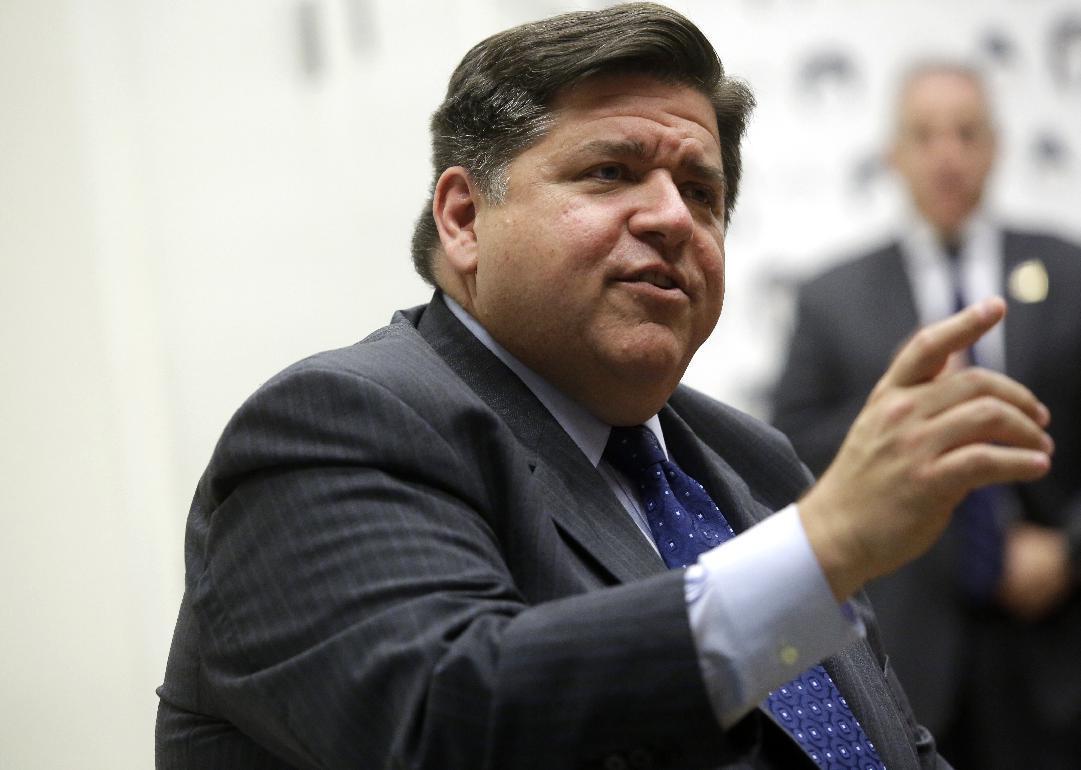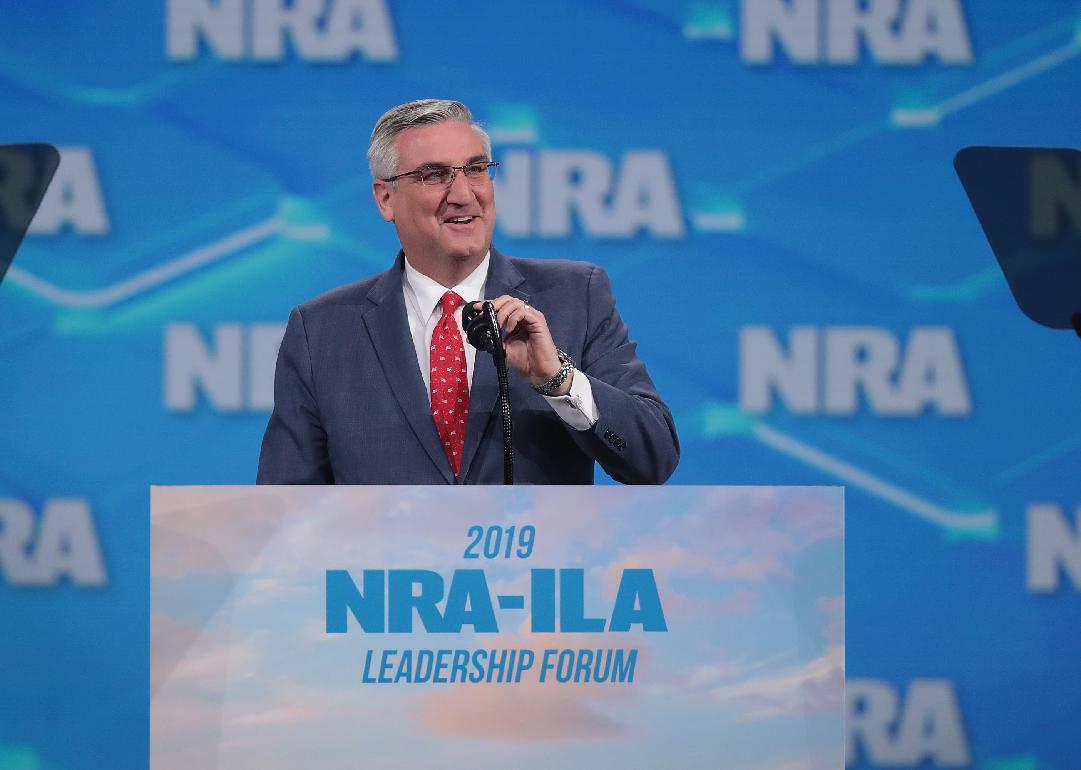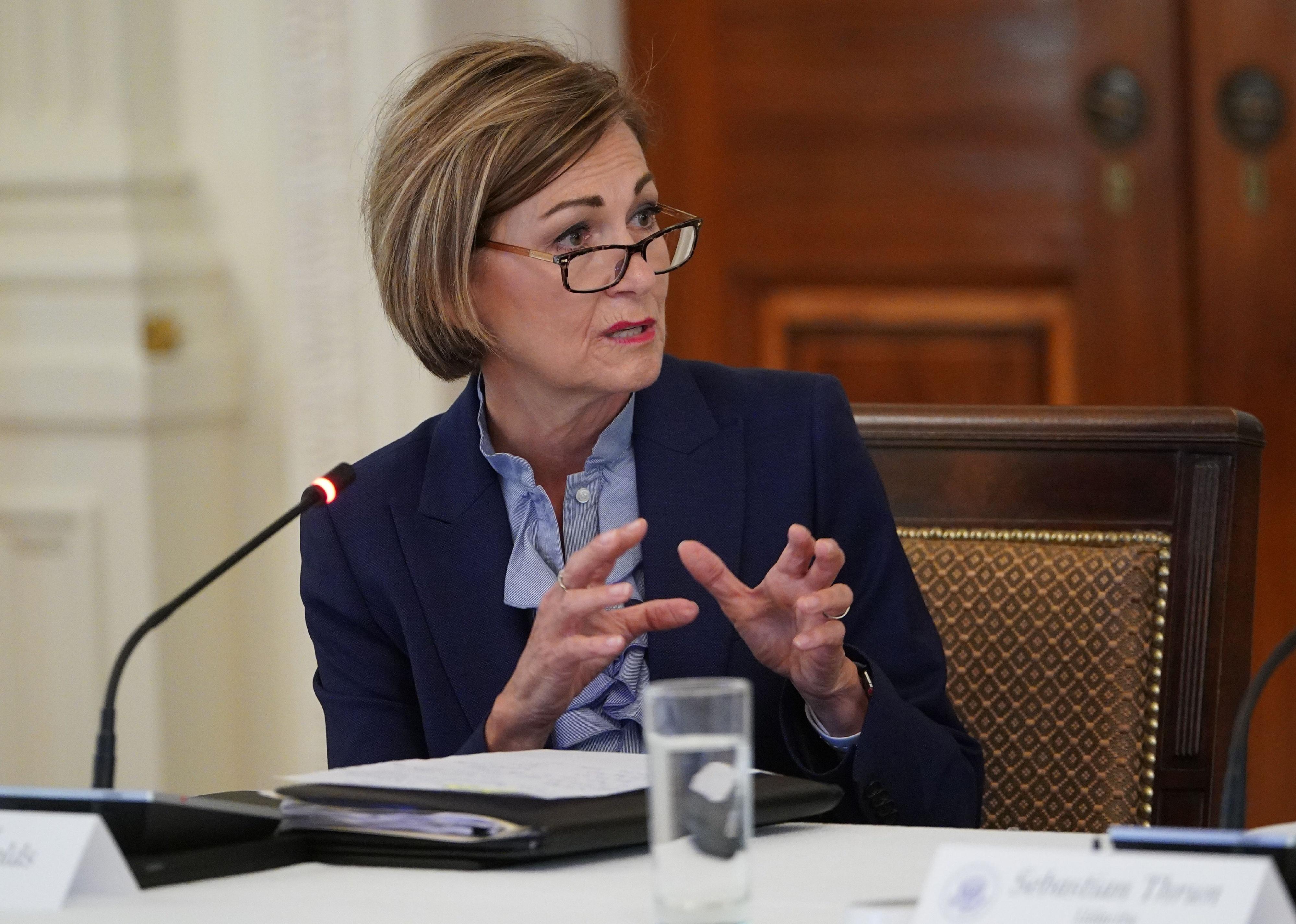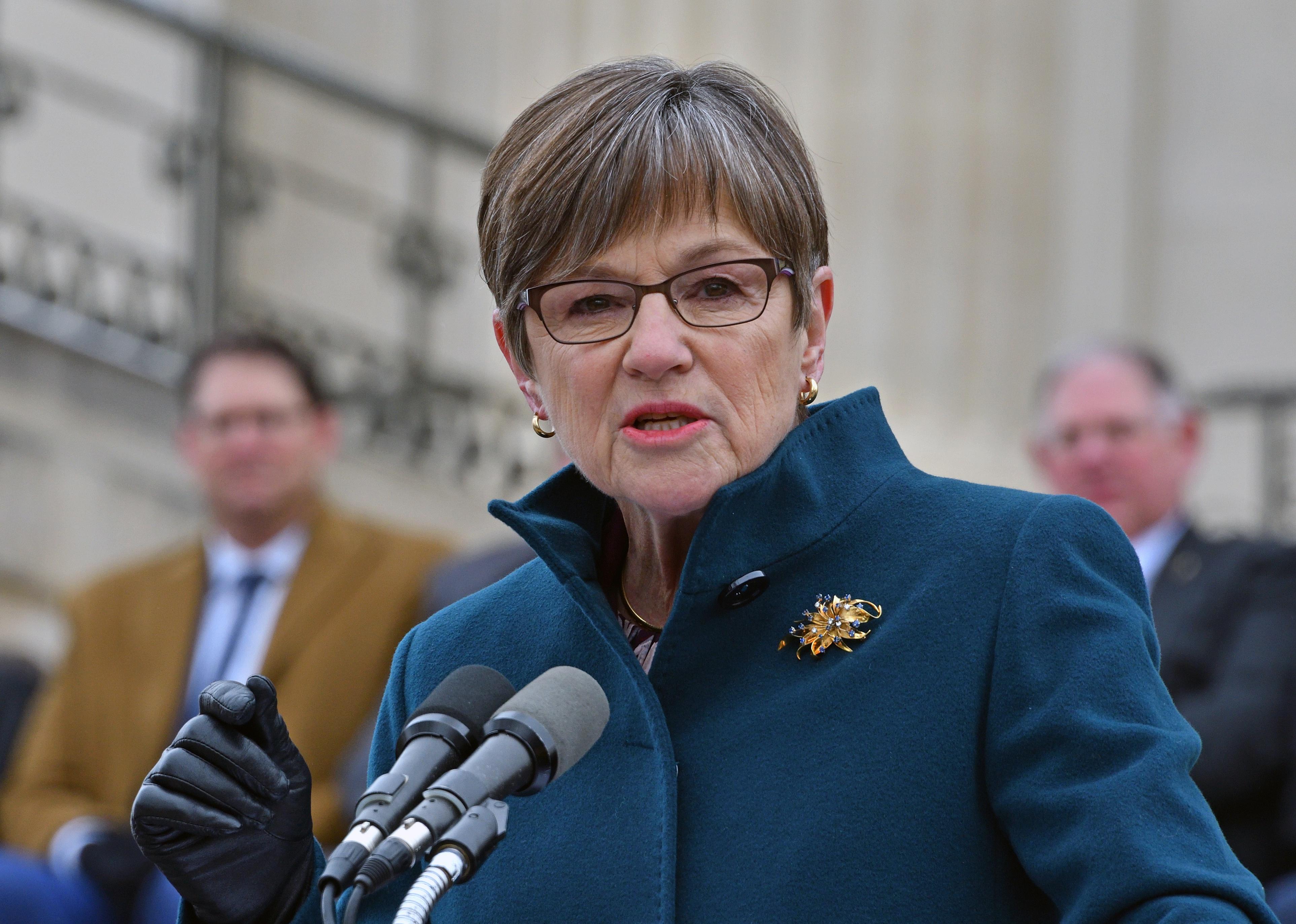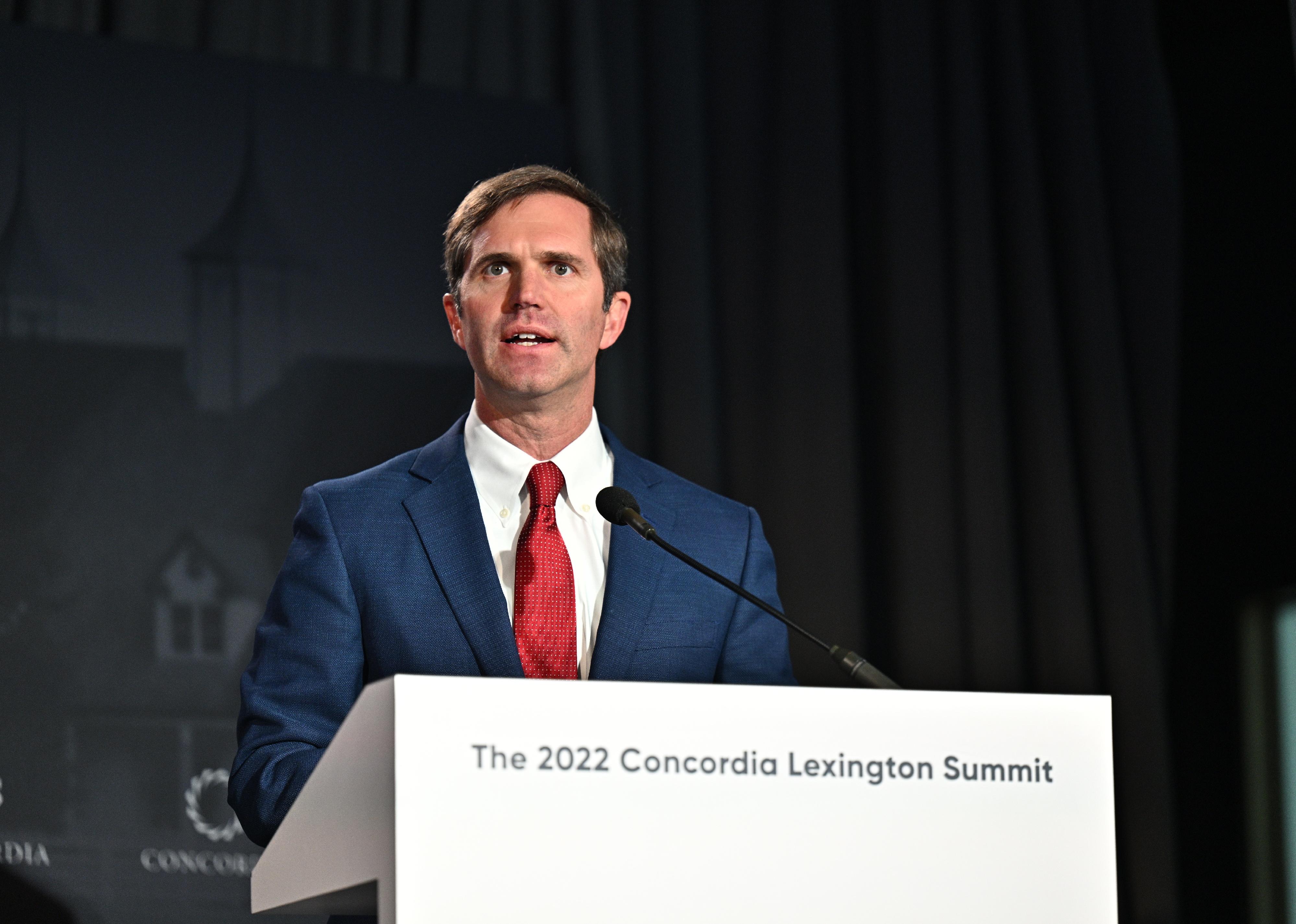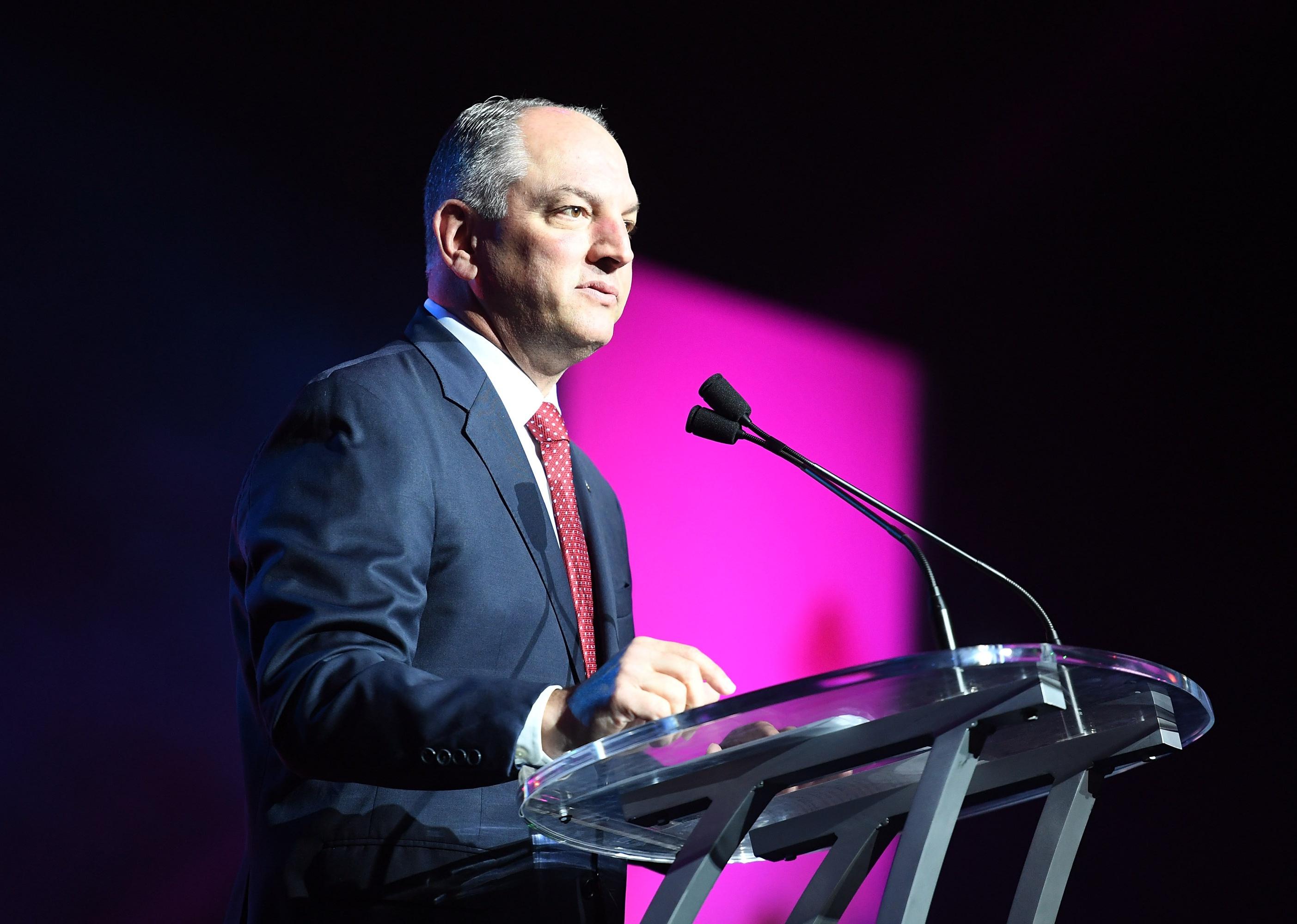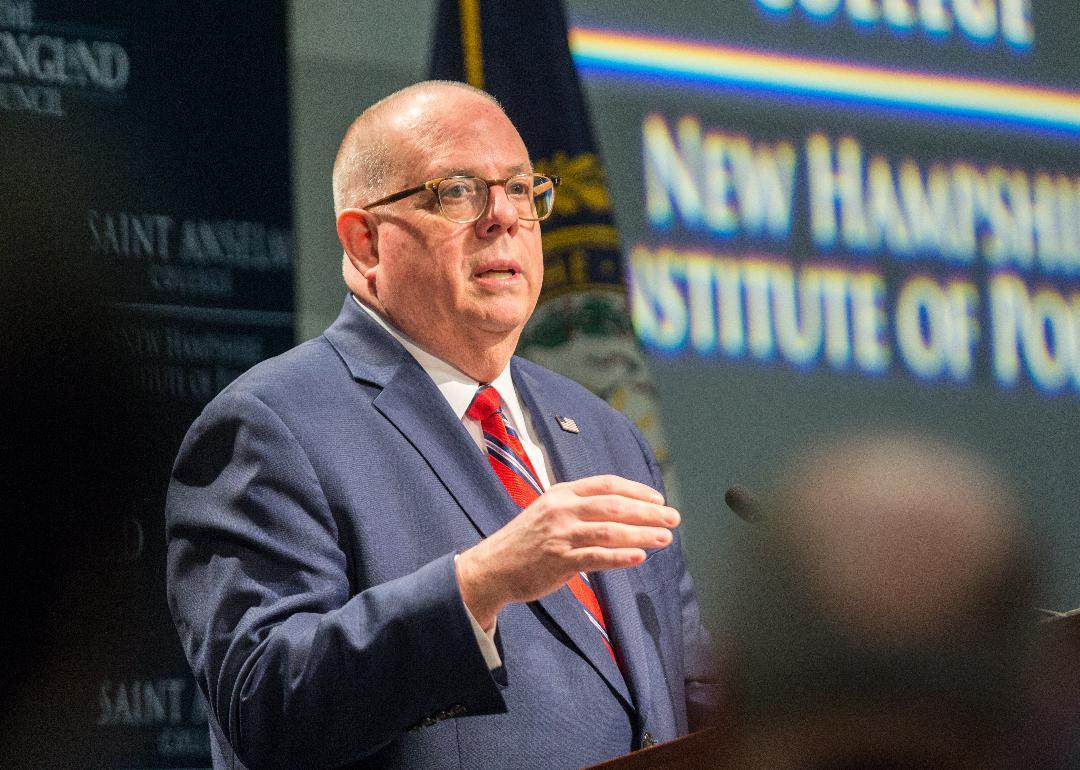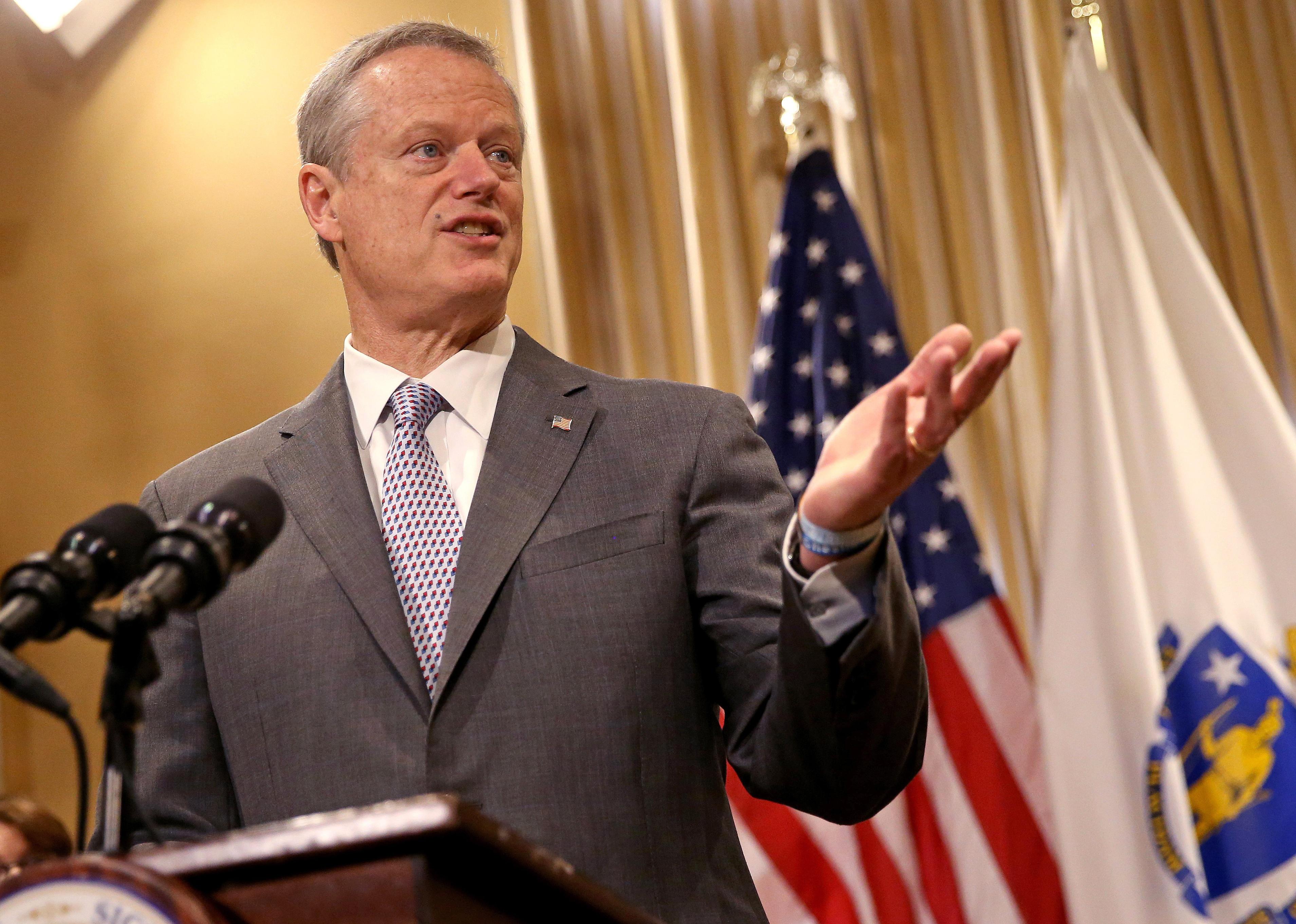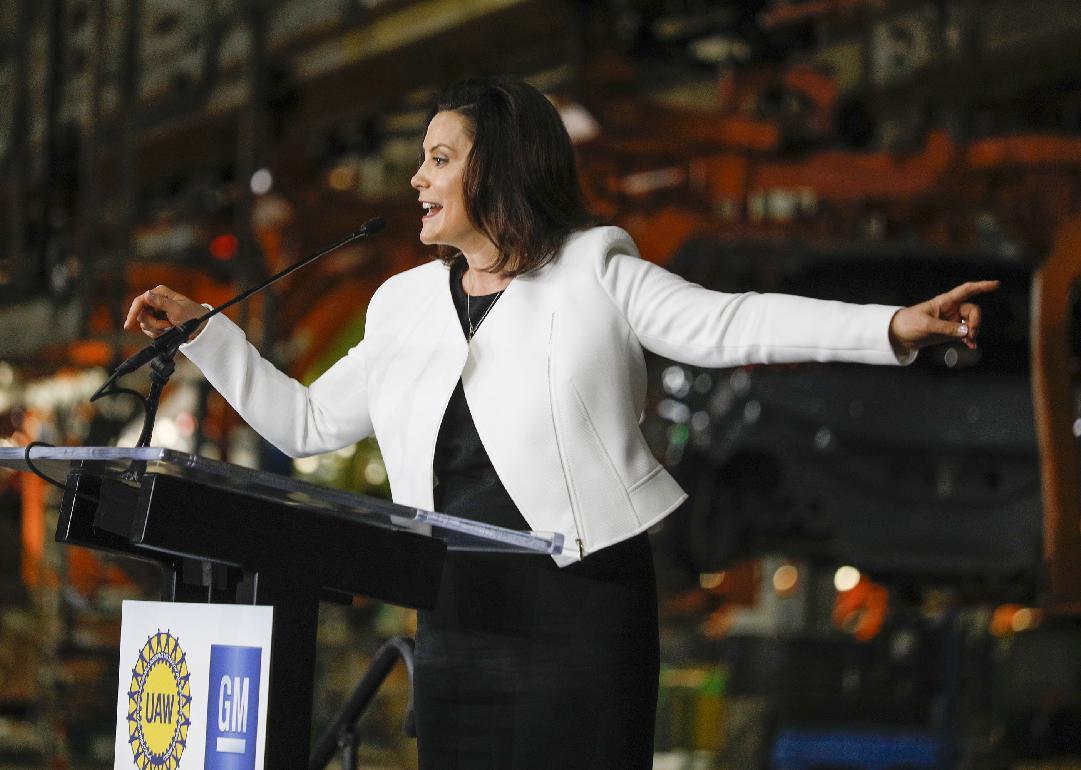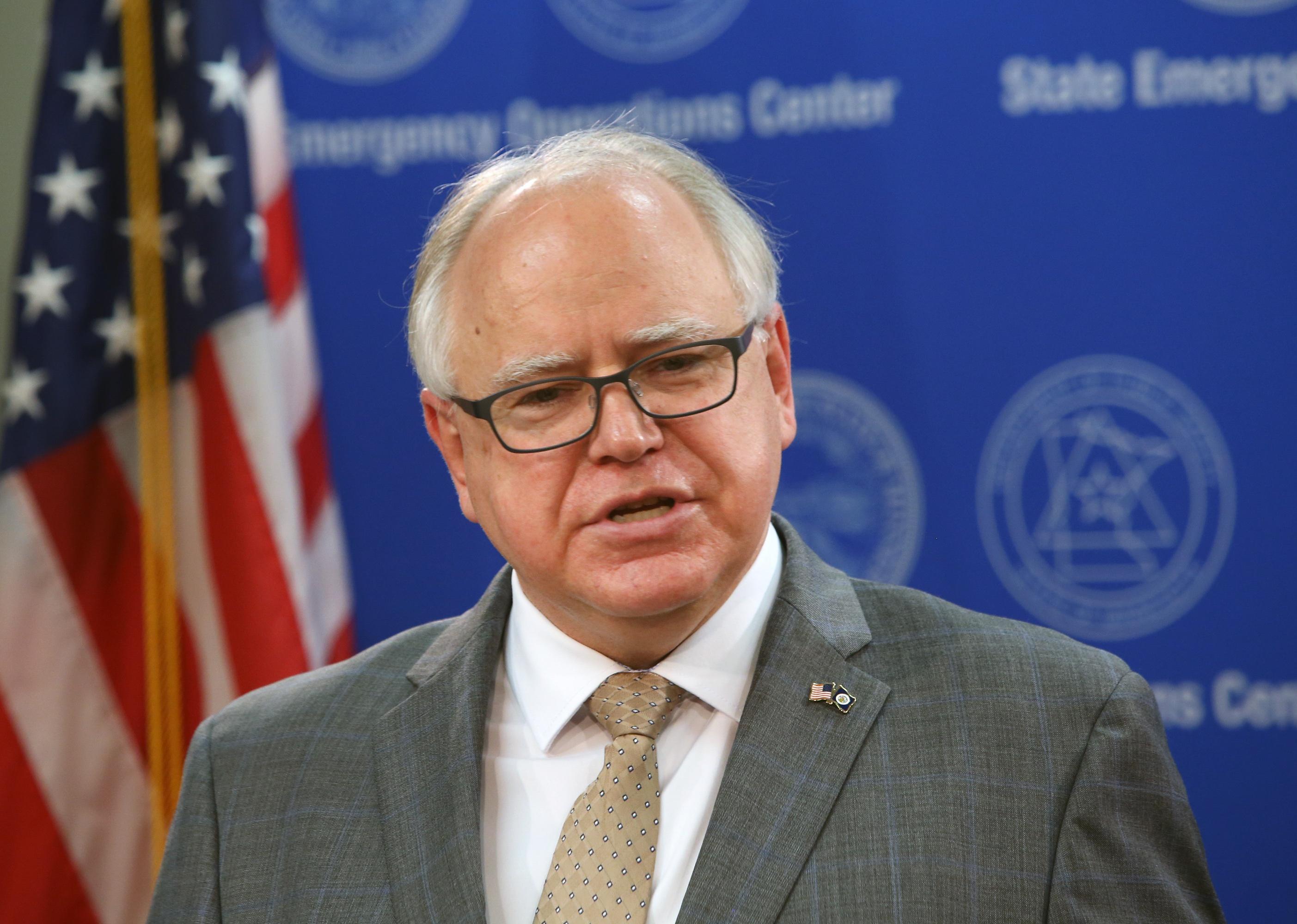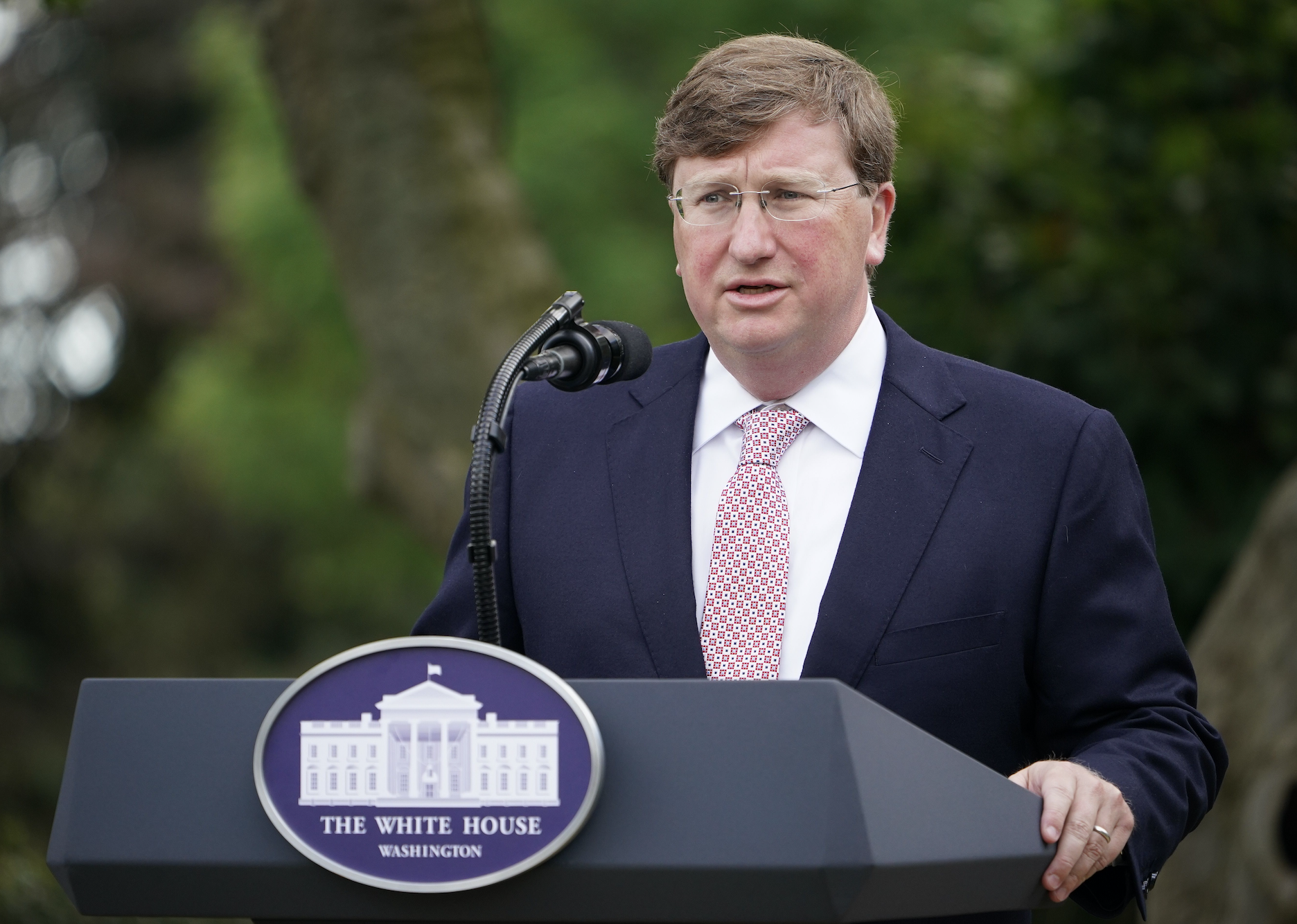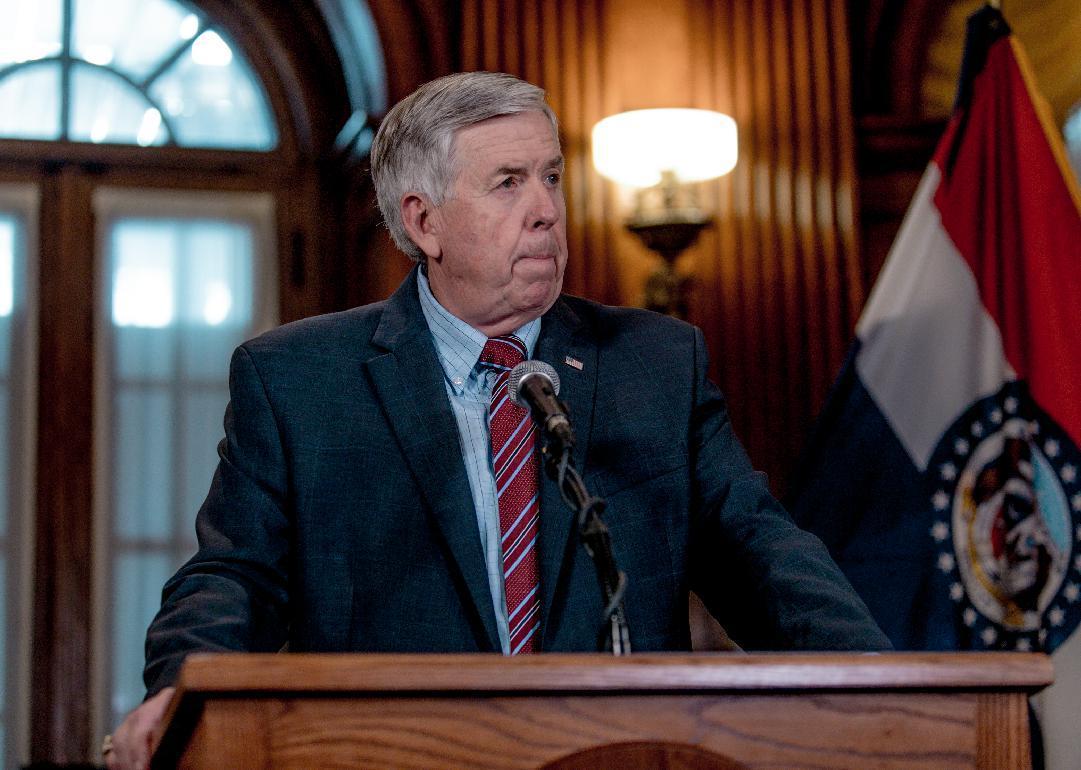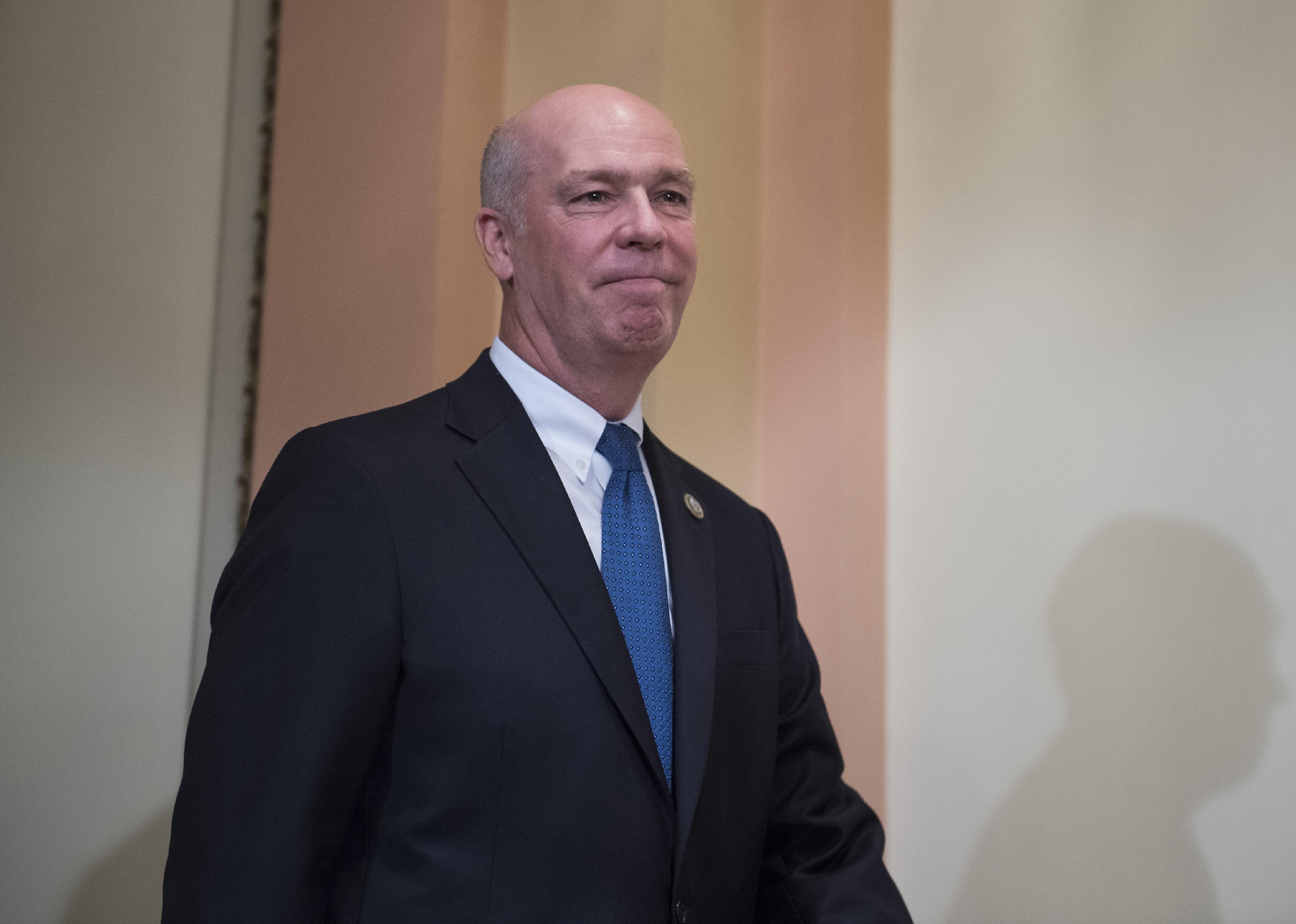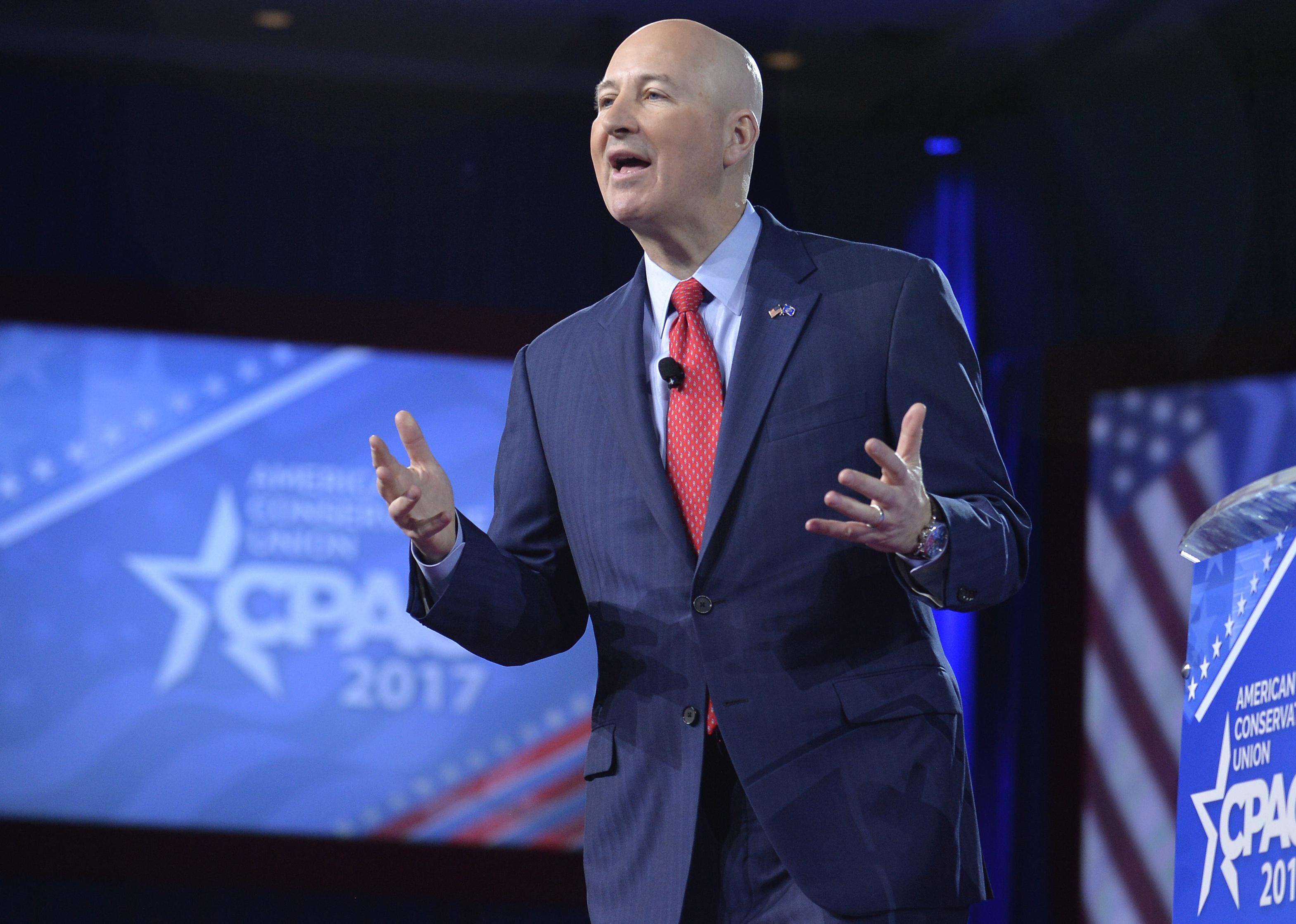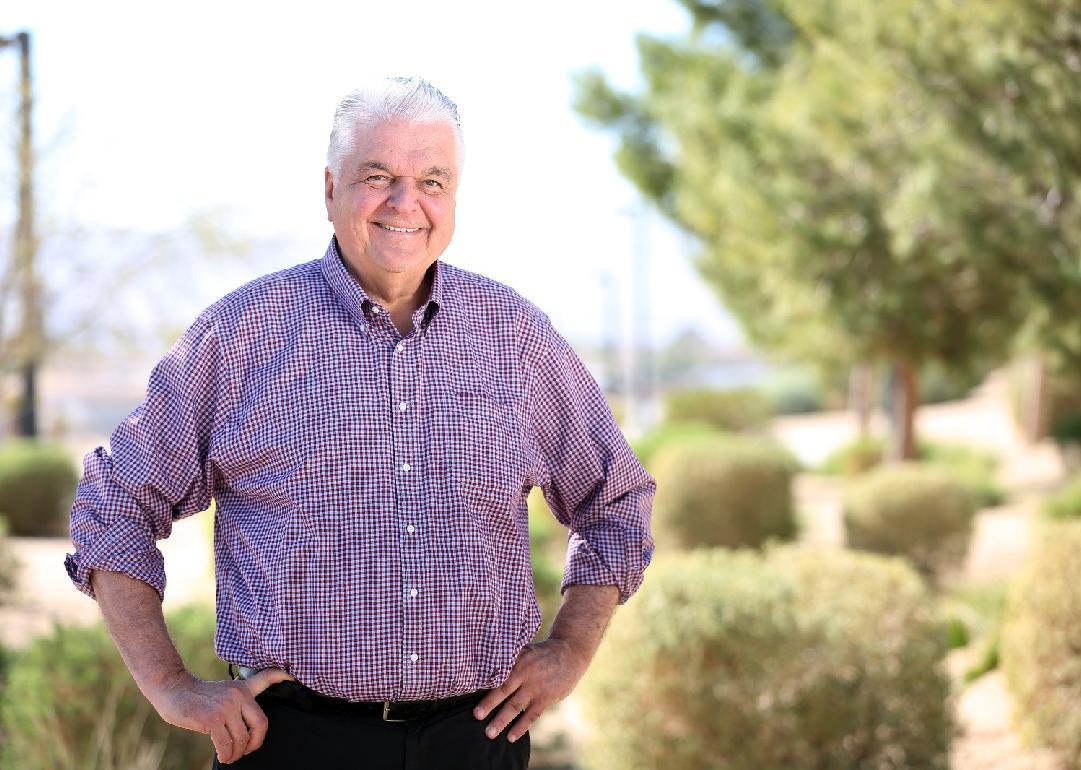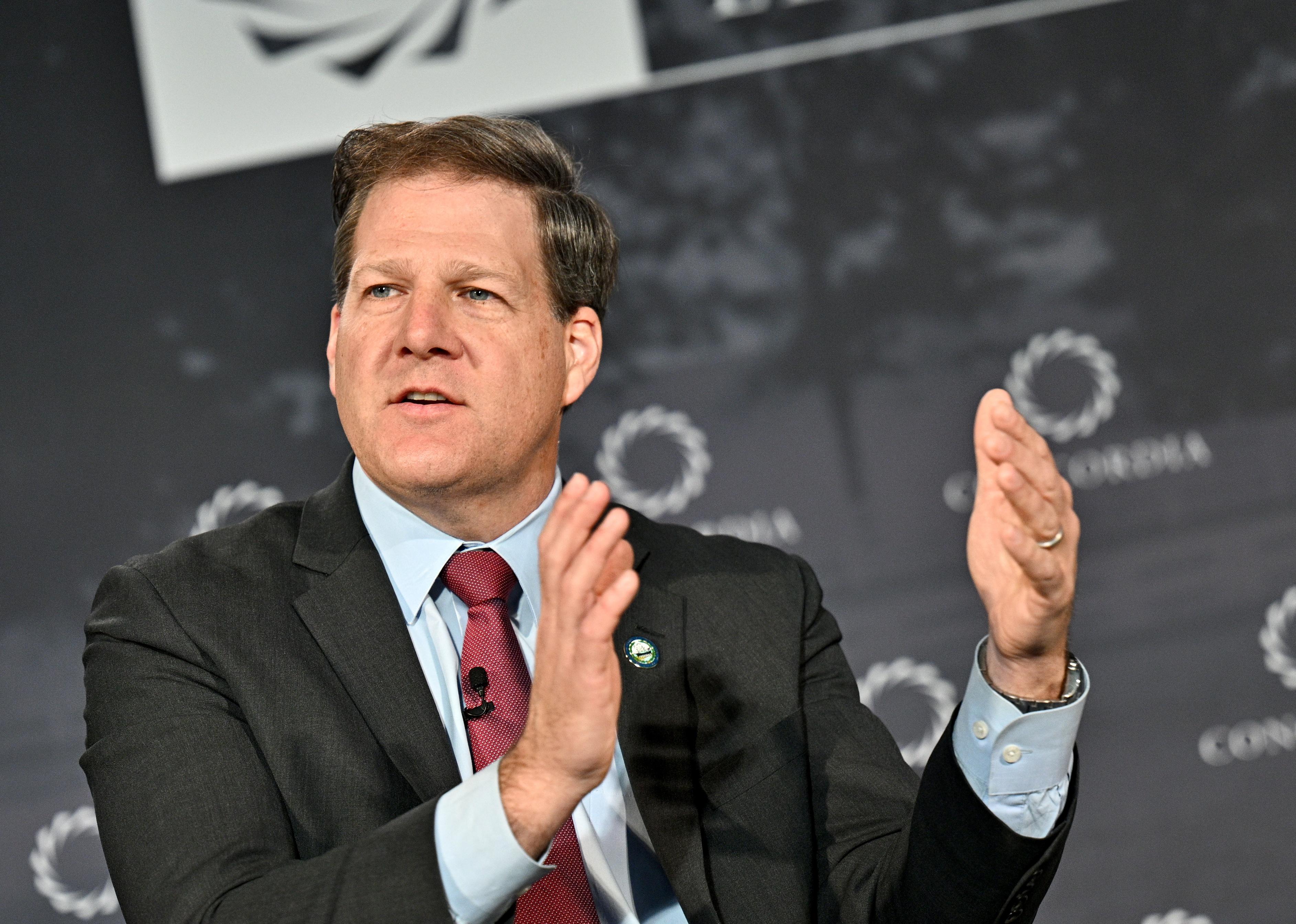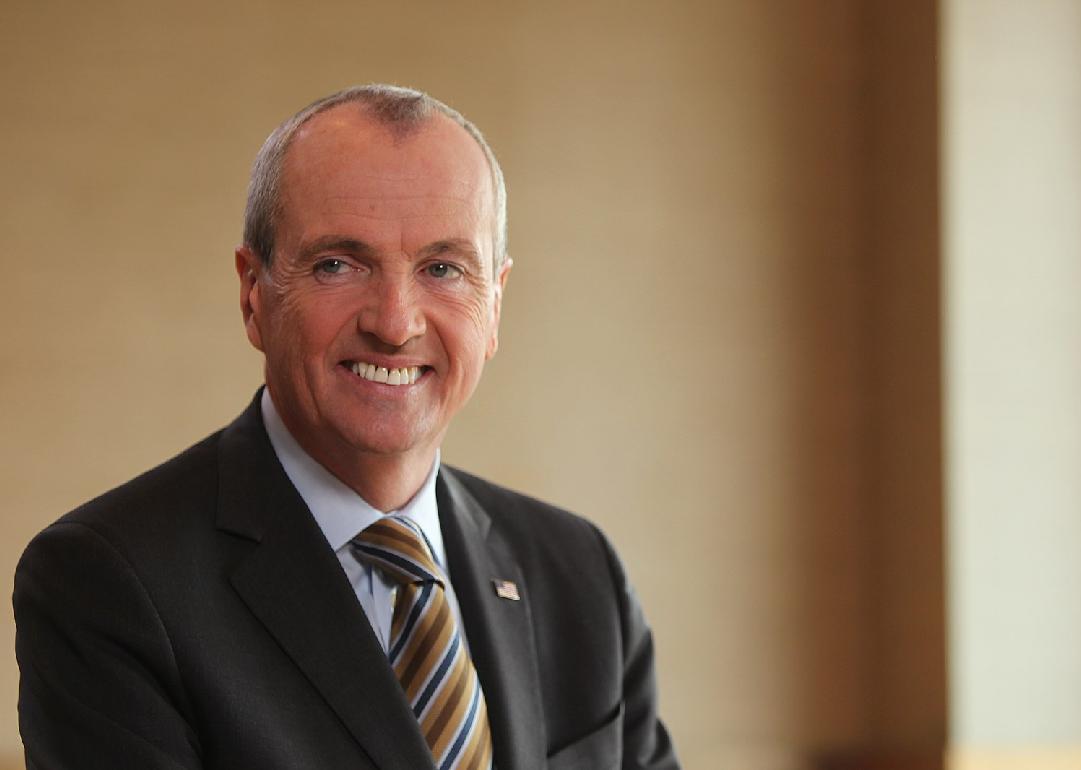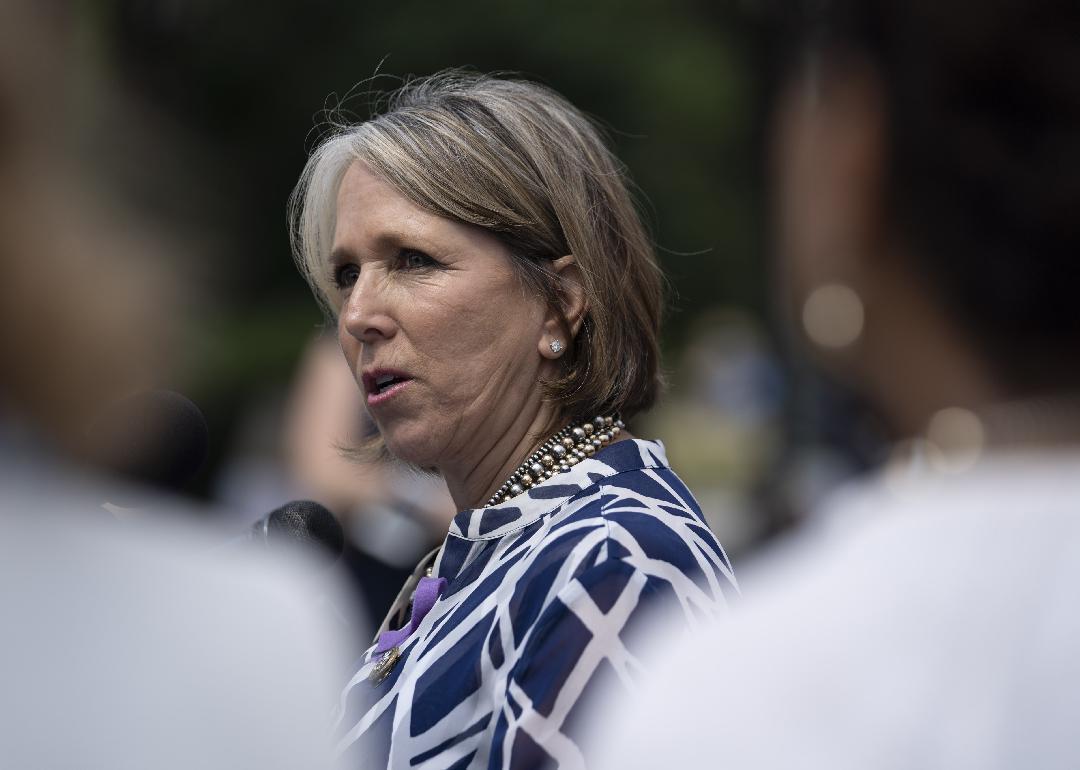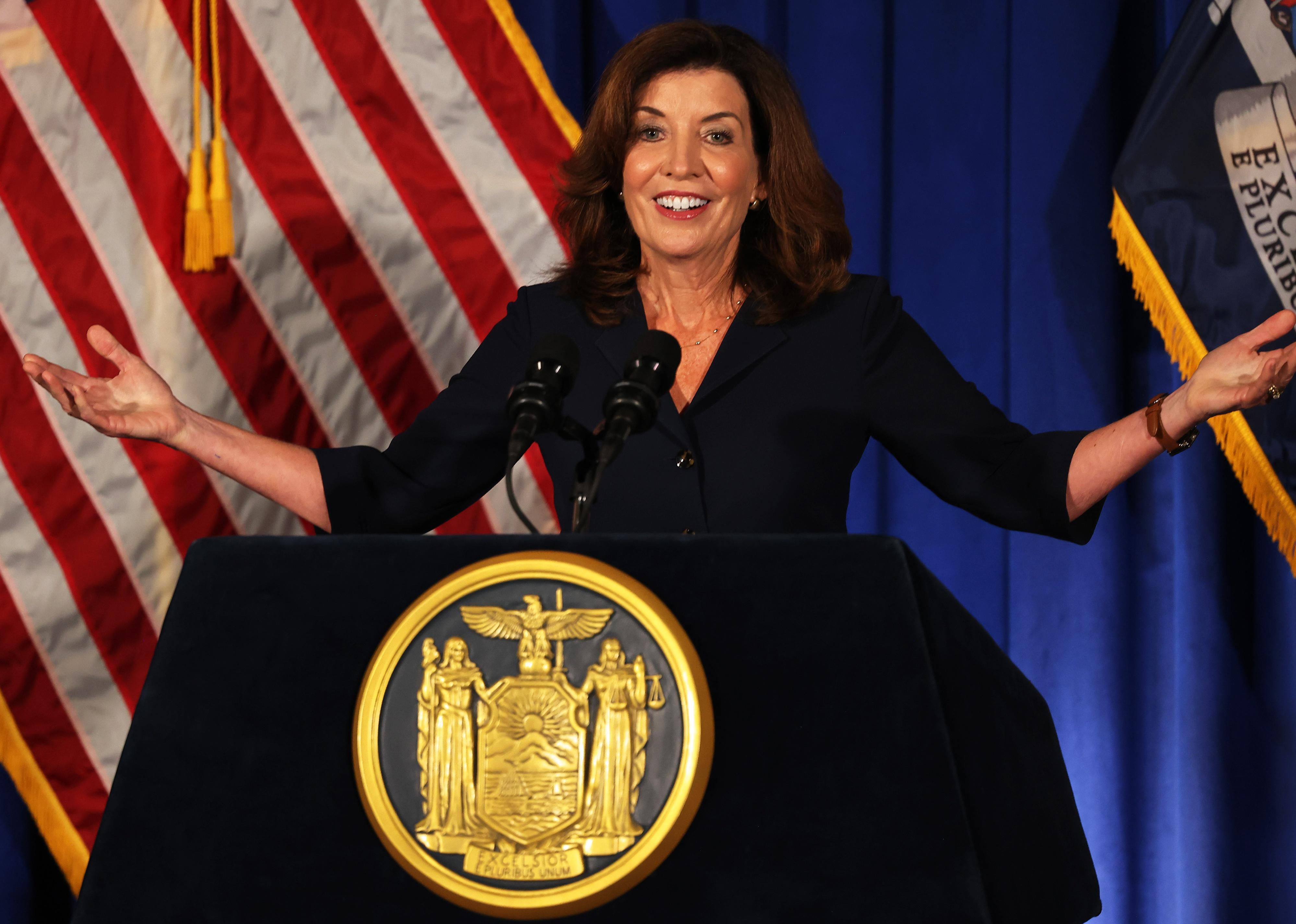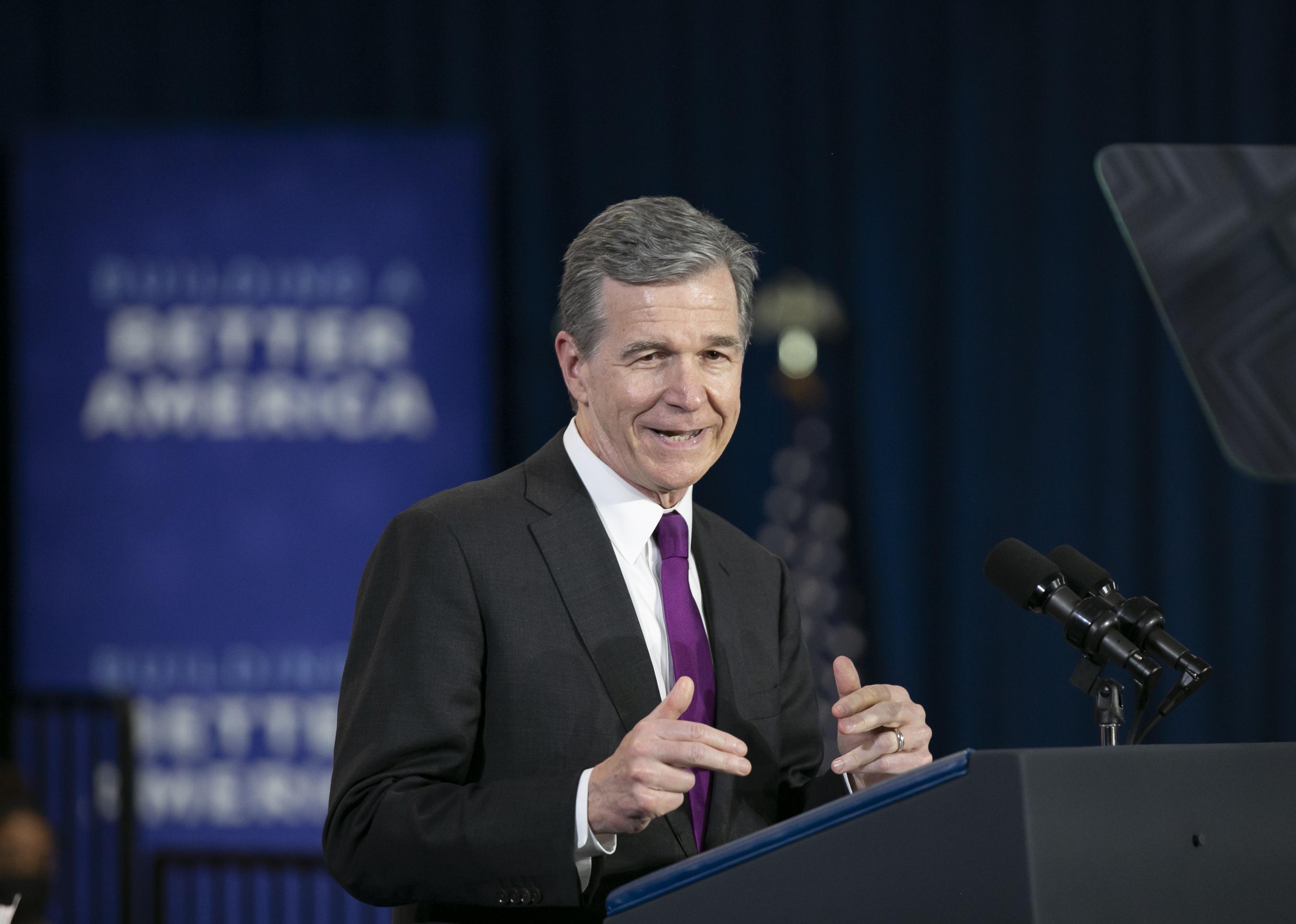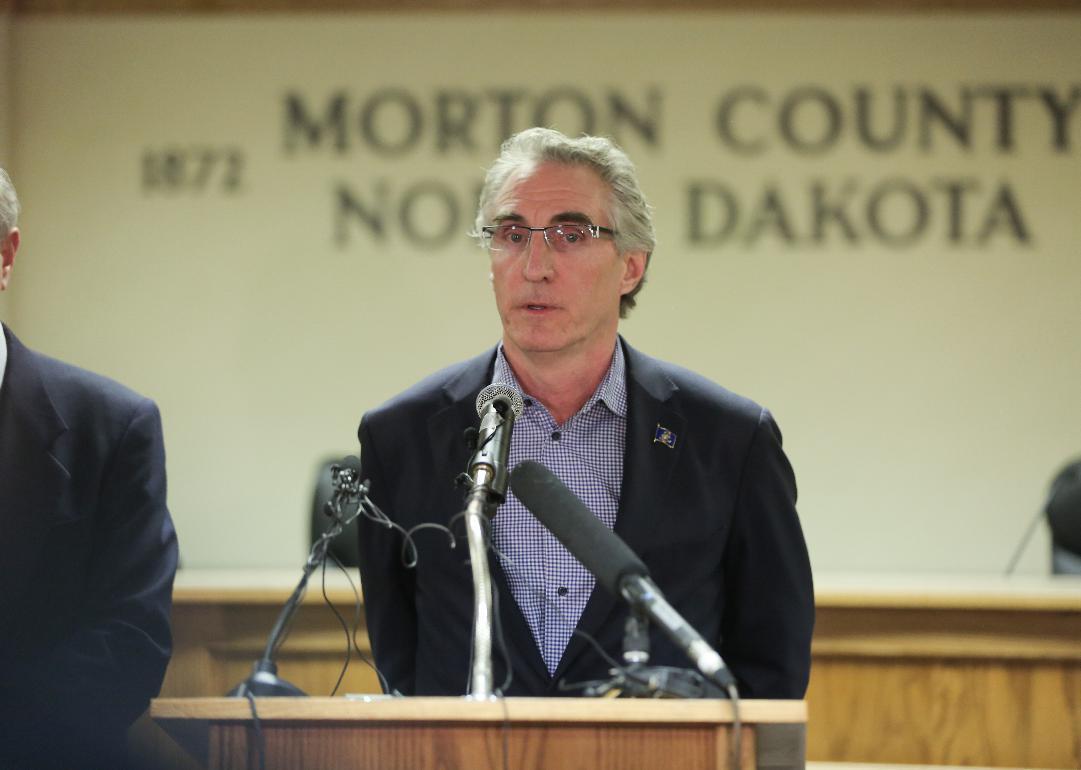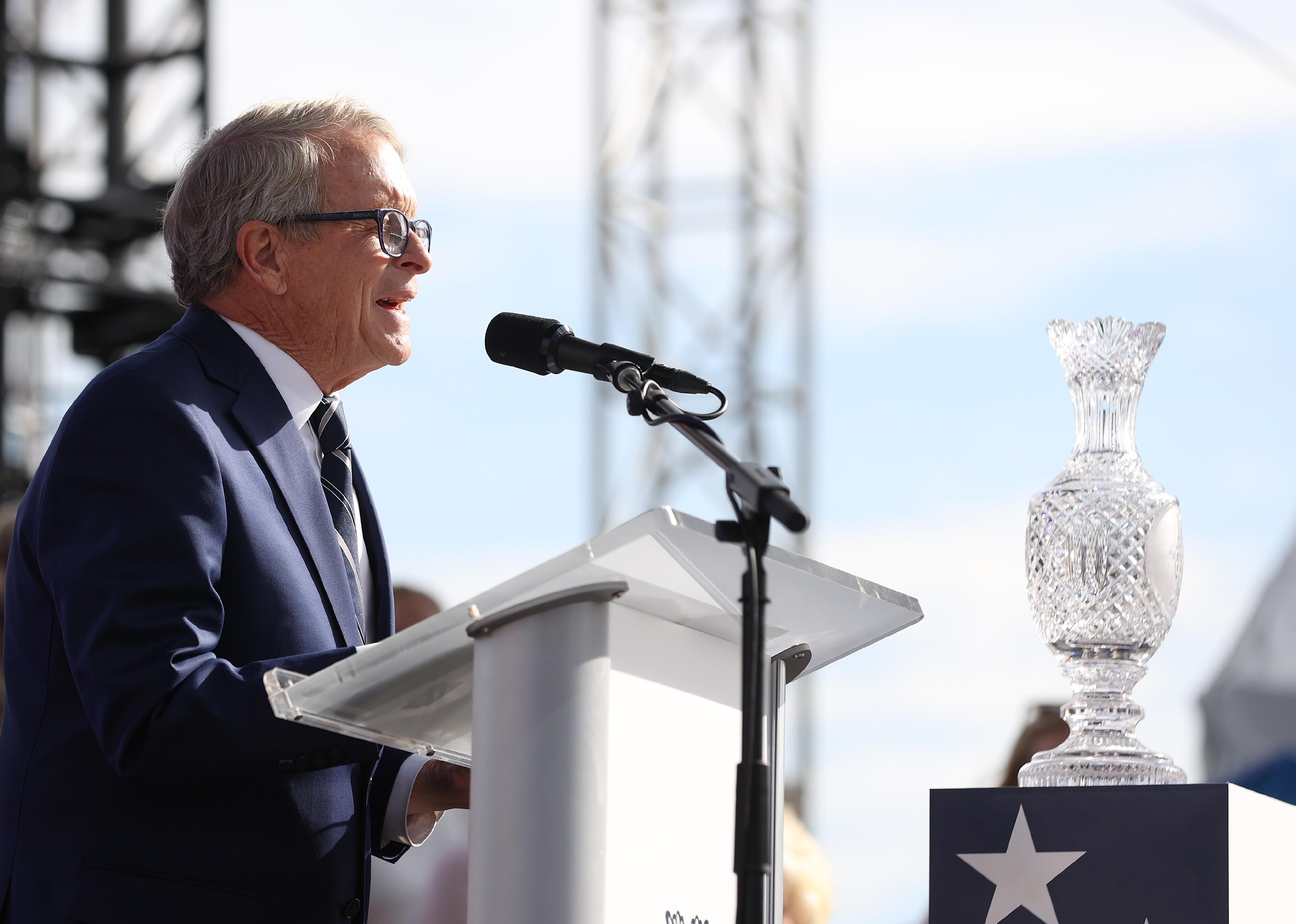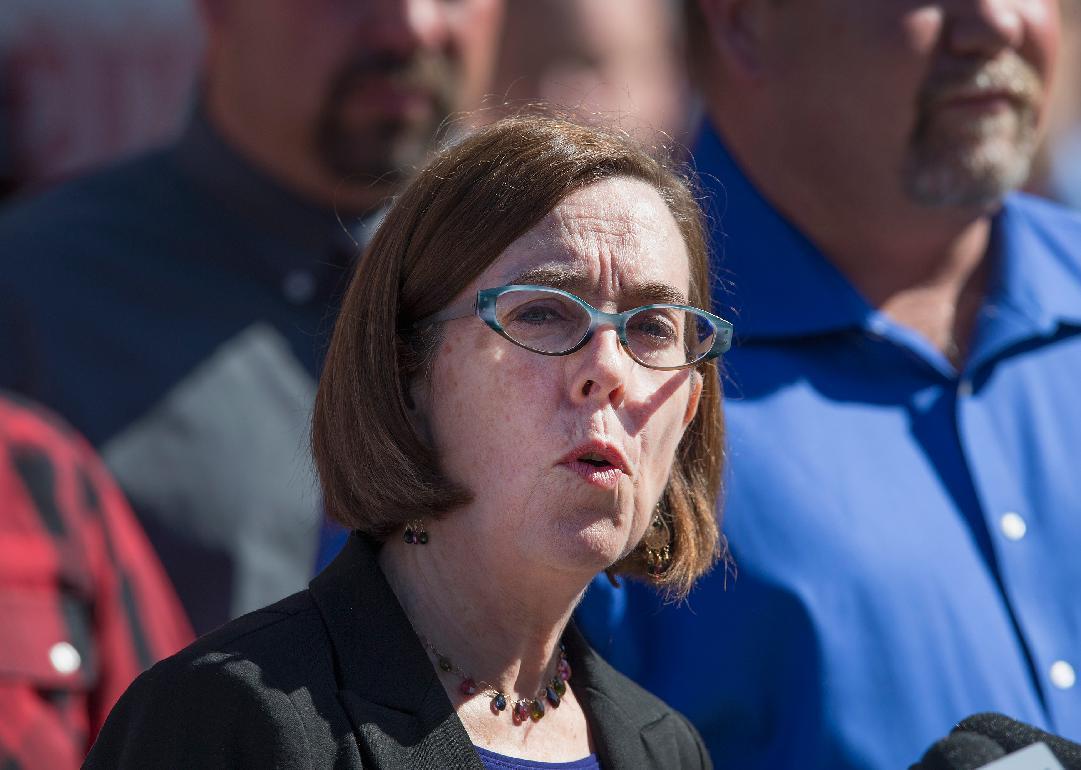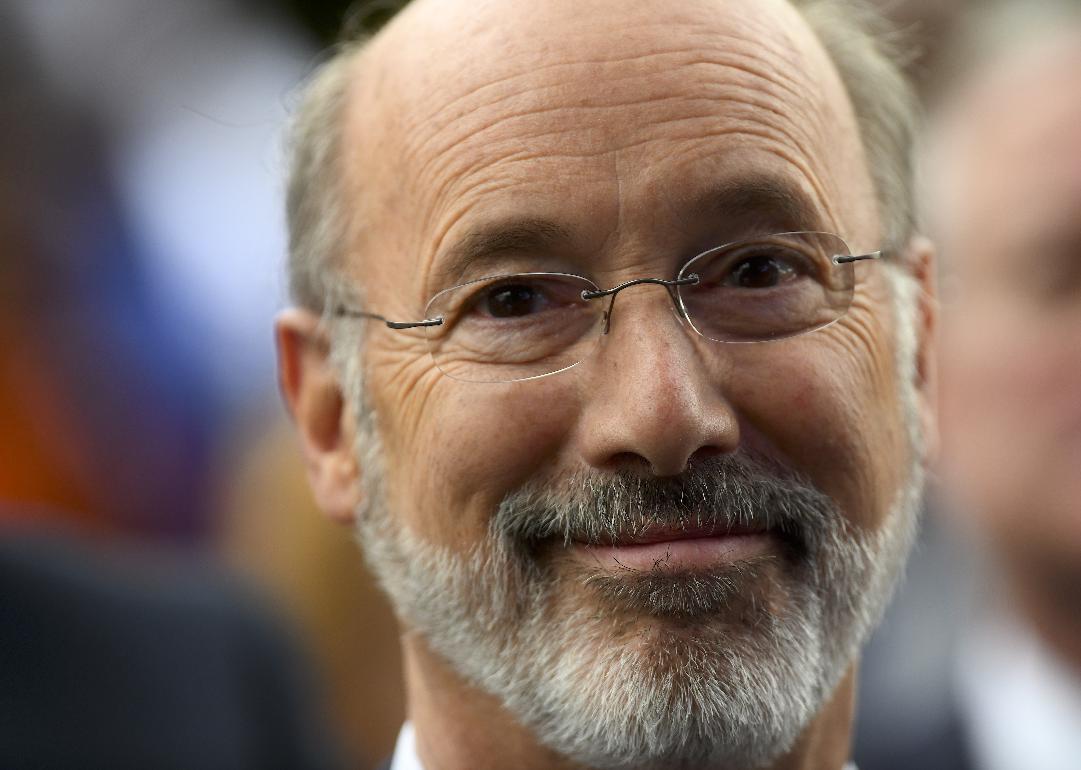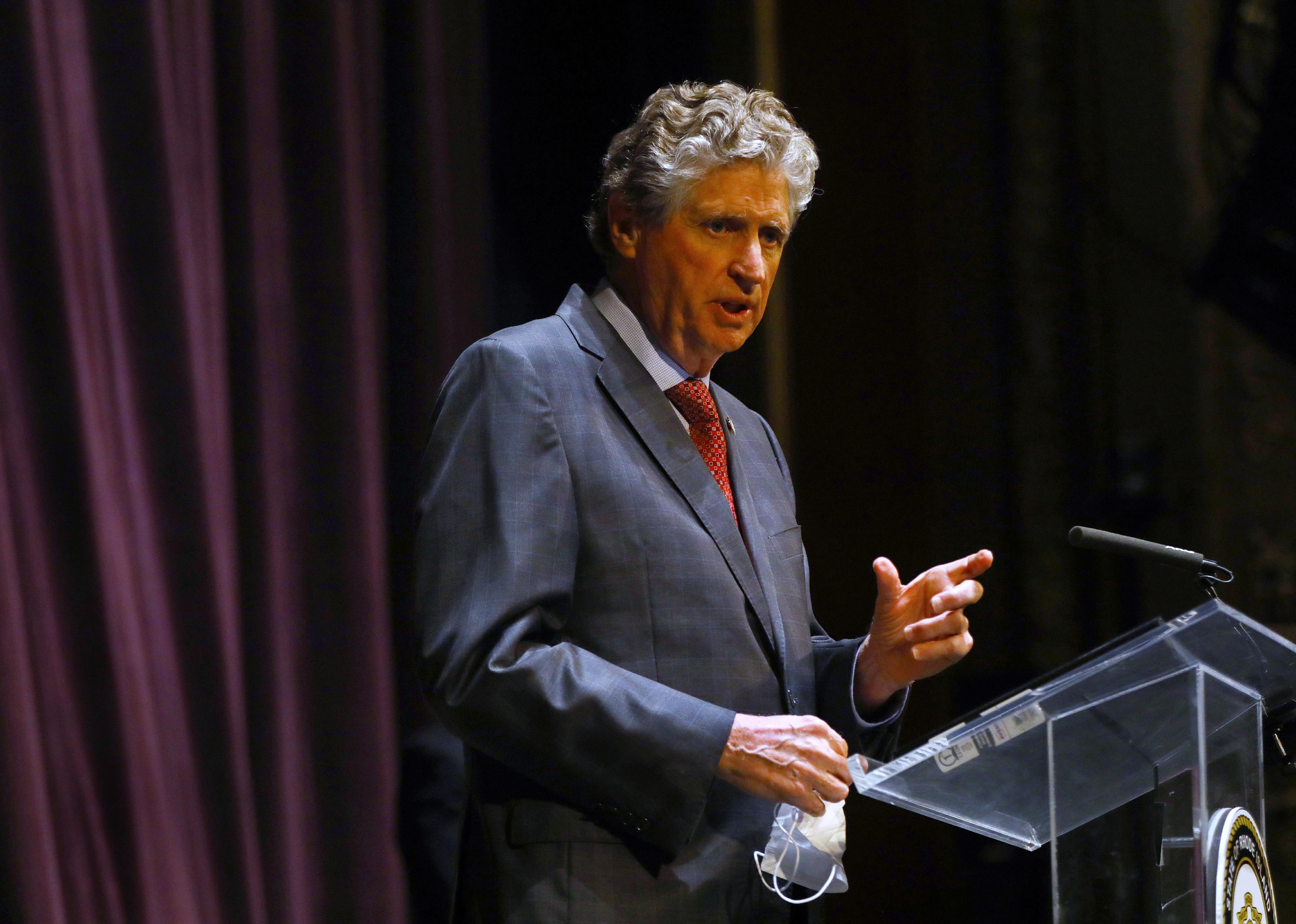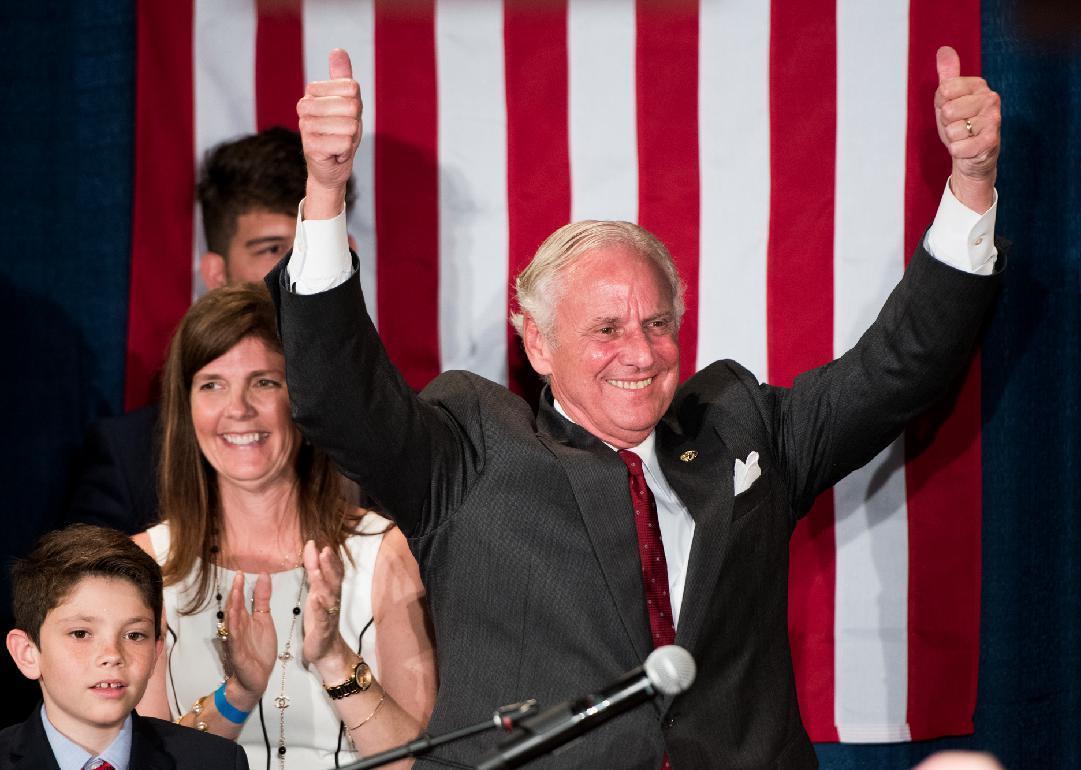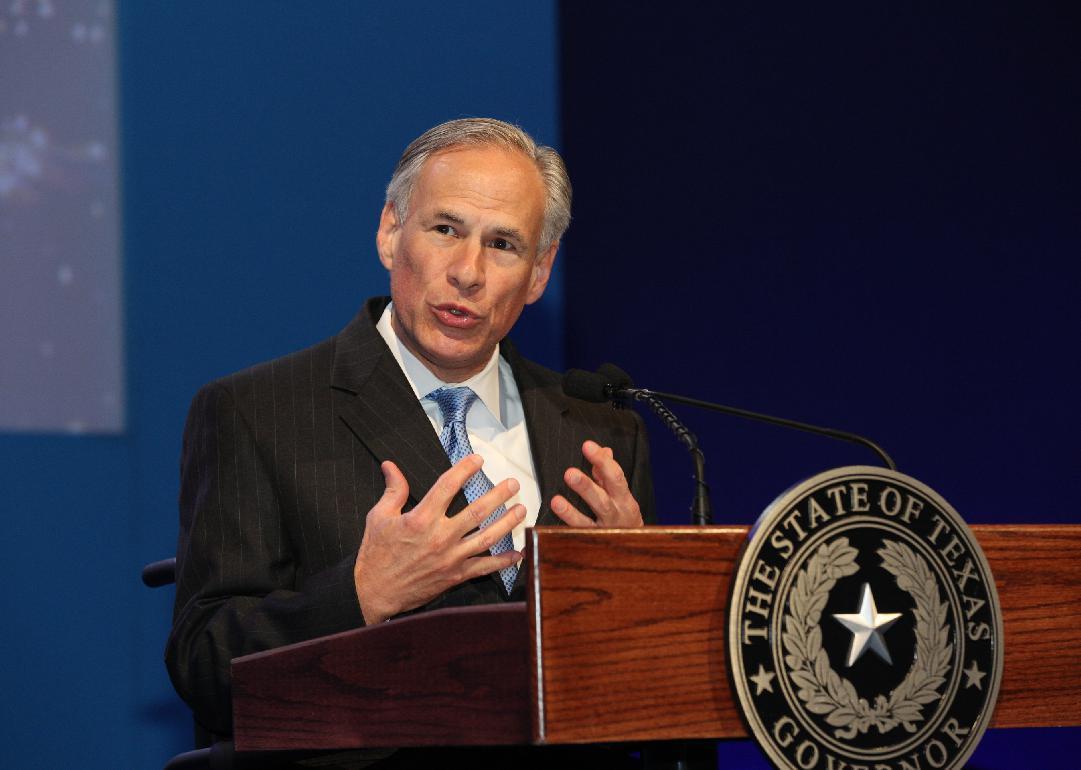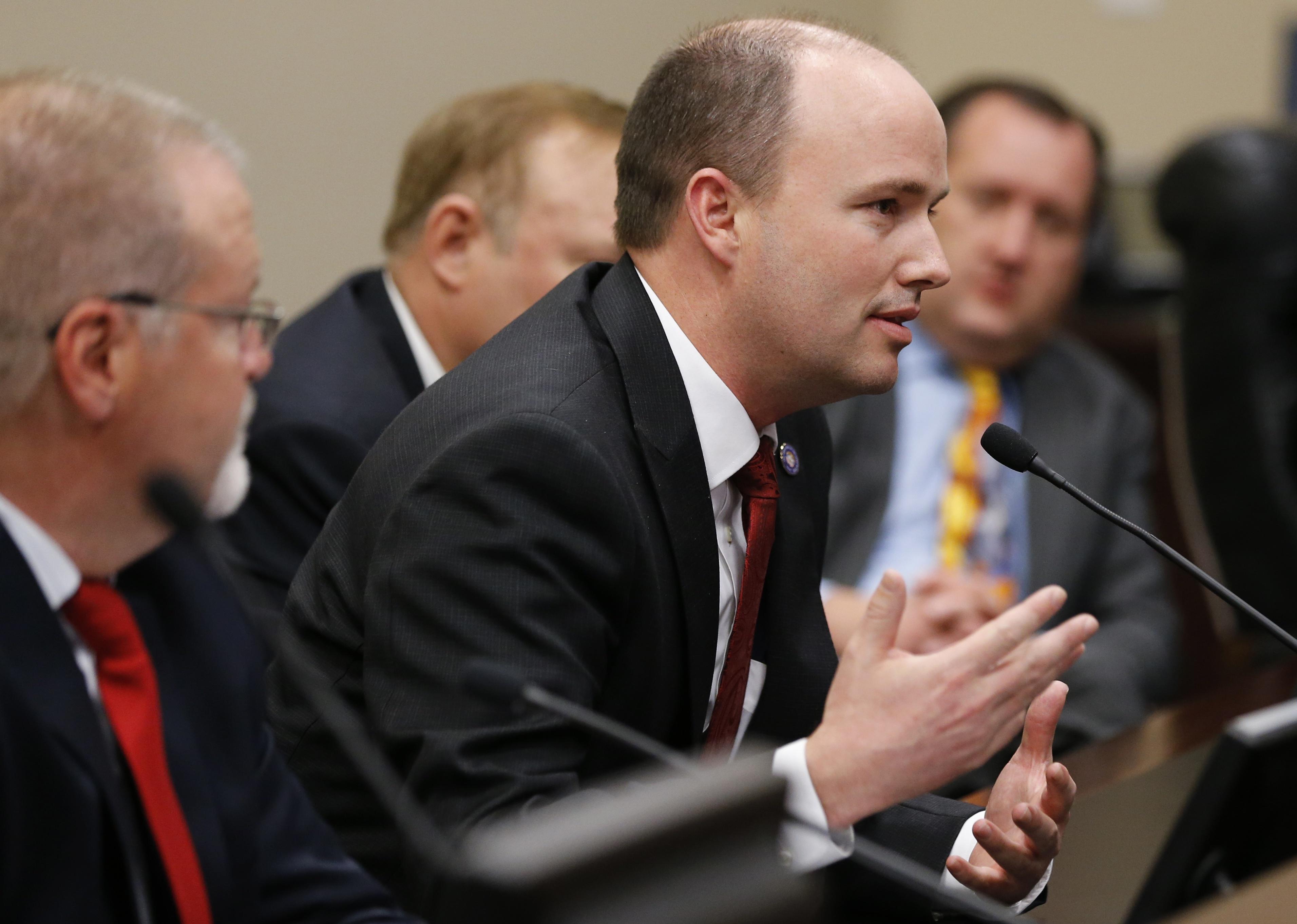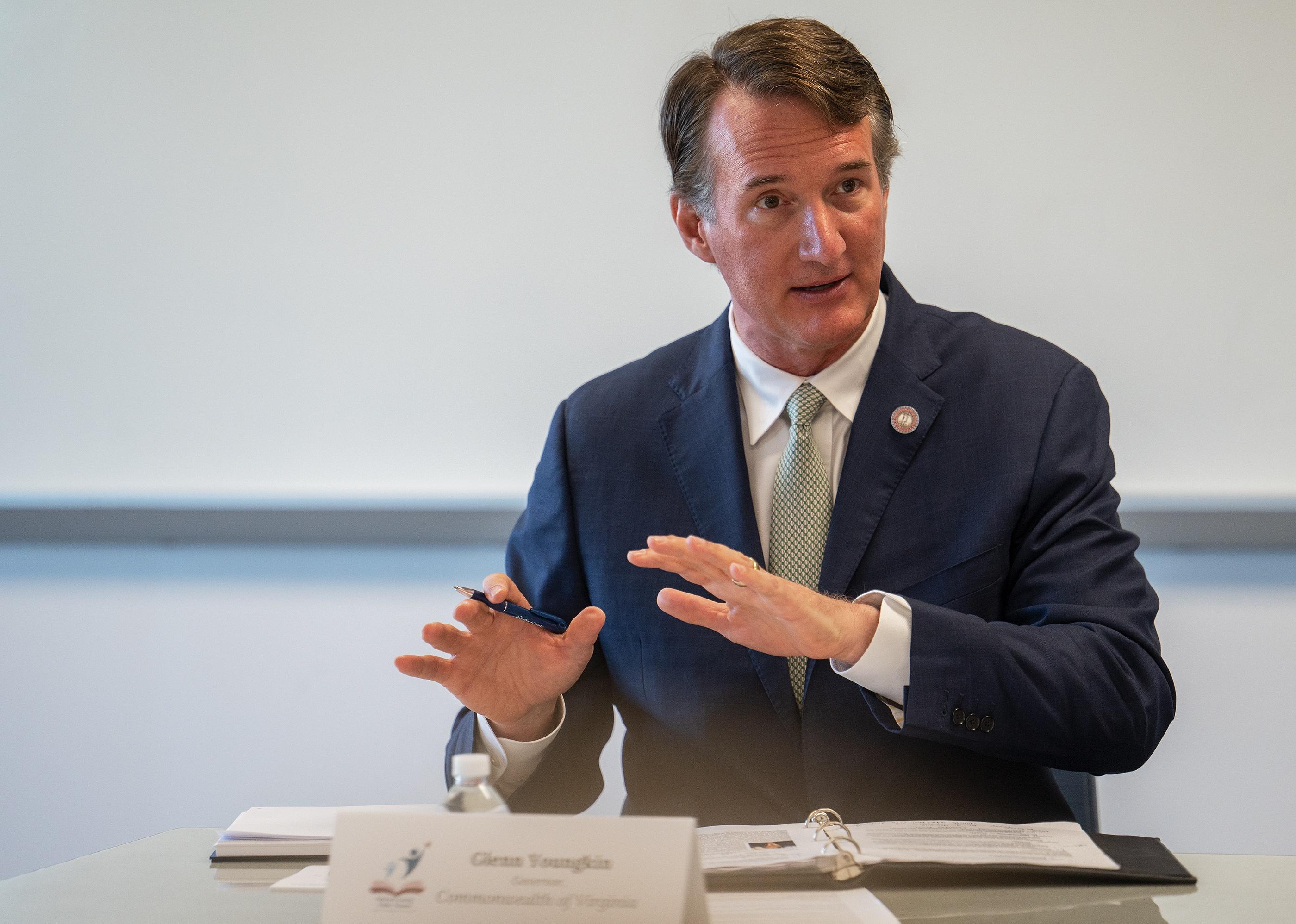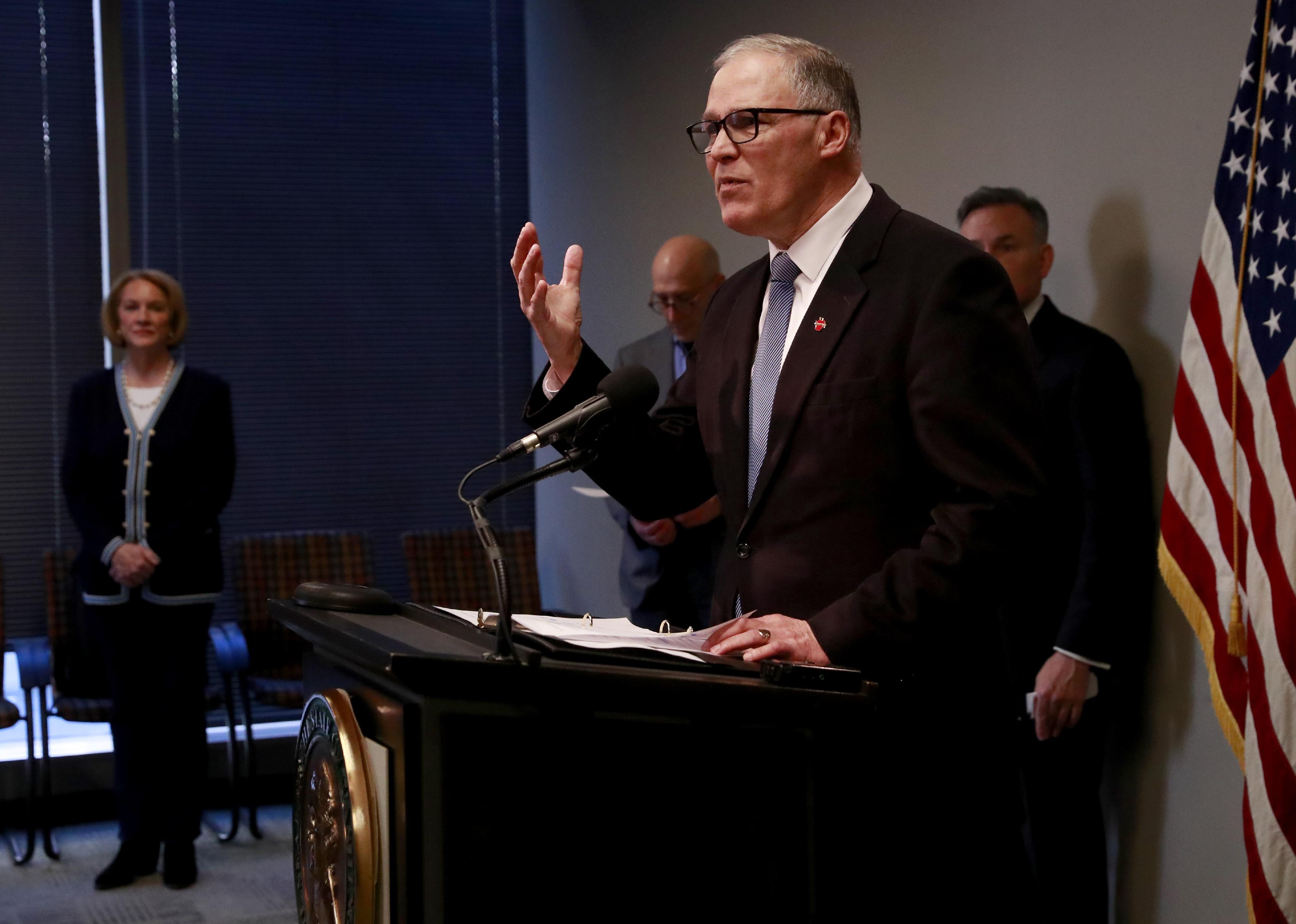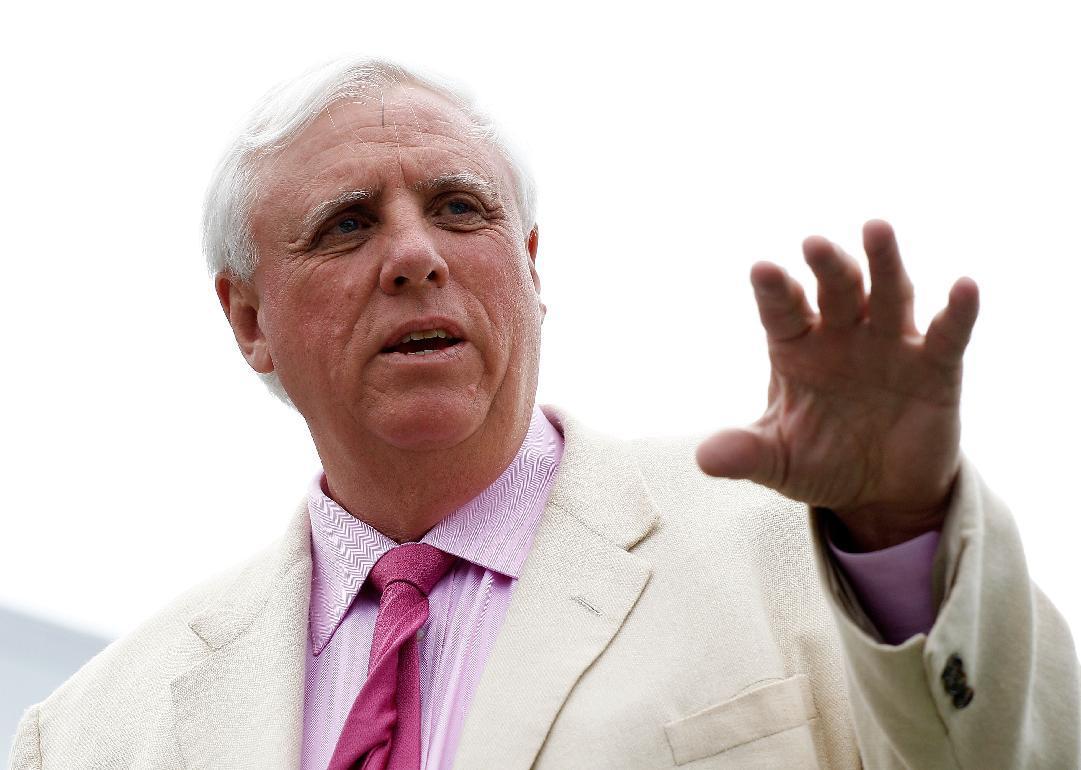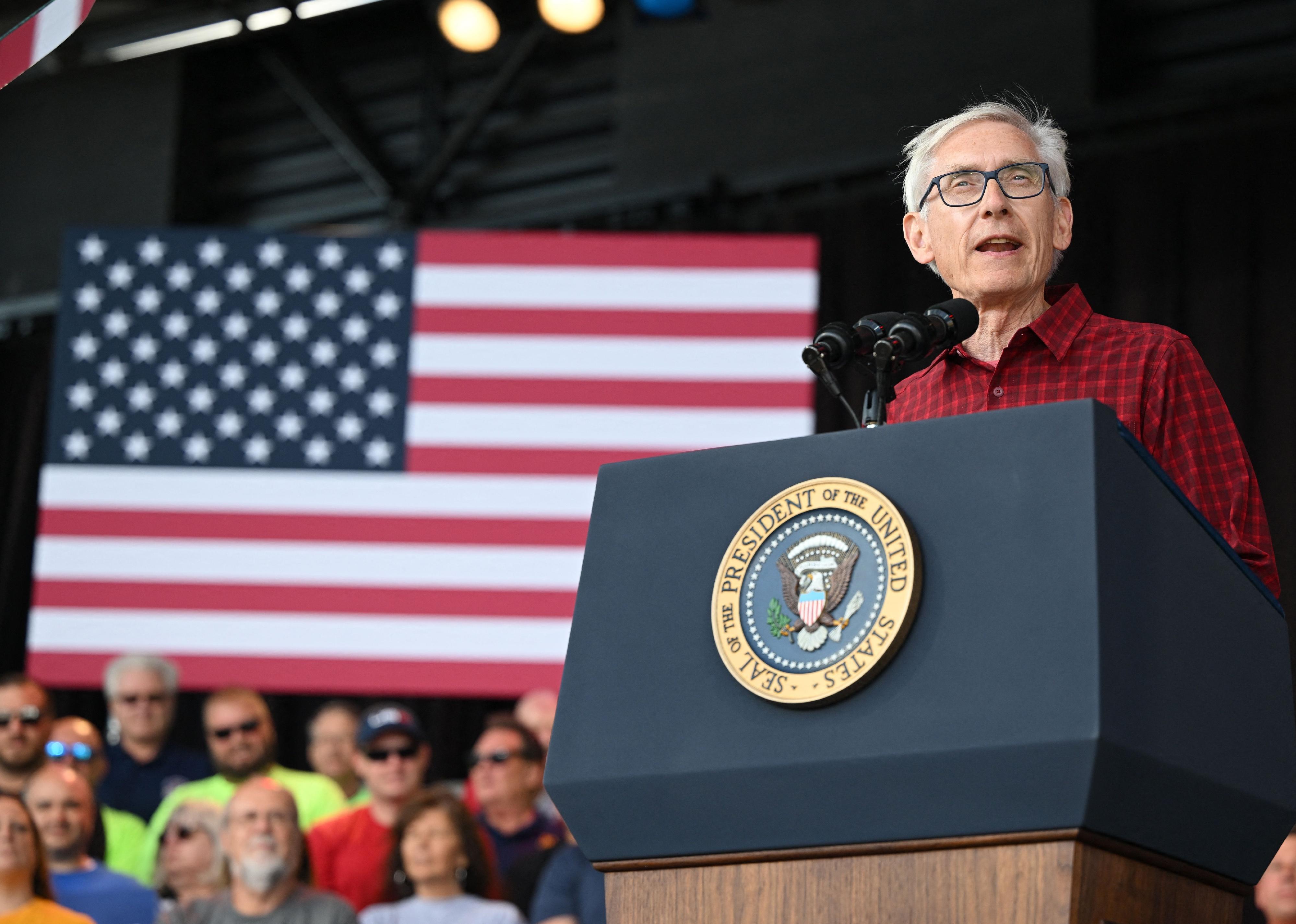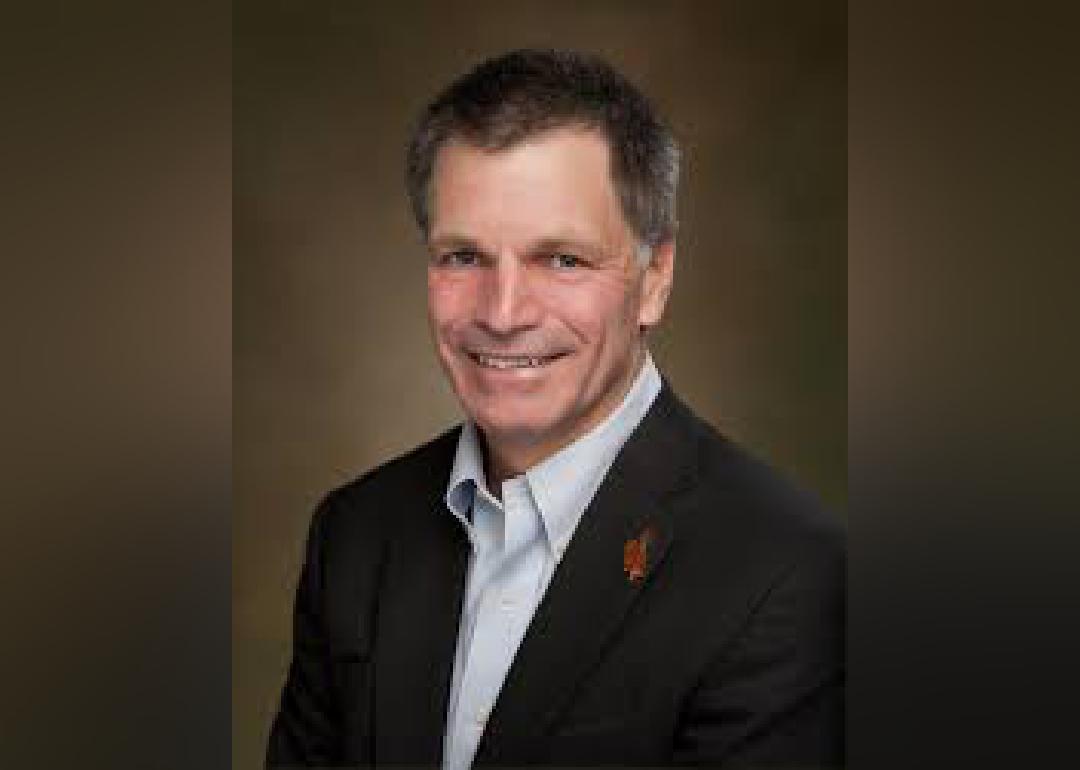Former jobs of the governor of every state
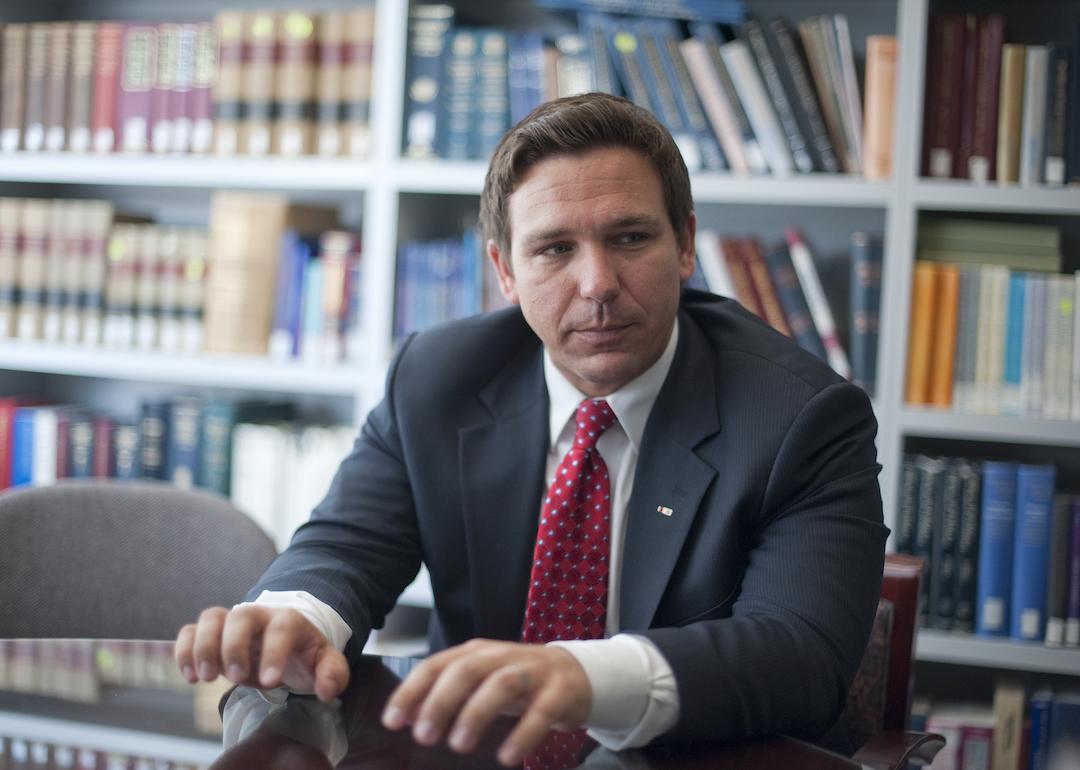
Douglas Graham // Roll Call
Former jobs of the governor of every state
Ron DeSantis (R) Florida is interviewed at Roll Call in Washington, D.C.
In 2018, 36 out of the nation’s 50 states held elections for governor. A record-shattering 16 women were major party nominees for governor, nine of which were successful, making the current number of female governors tied with the all-time high number set in 2004. The LGBTQ+ community also made historic strides, as Colorado’s Jared Polis became the first openly gay man to be elected governor in the United States, and Oregon’s Kate Brown, who is bisexual, was reelected in her state.
Fast forward to the 2022 elections, and 36 states will once again elect—or reelect— their governors. But who are these powerful politicians, and what were they doing before they took their states’ reigns?
While all 50 governors bring with them experiences from different walks of life, some share several commonalities. A total of four current governors have served in the military, and 15 were at one point the lieutenant governor of their states. Eleven governors previously served in the U.S. House of Representatives, while just one was a former U.S. senator.
Stacker analyzed the former roles every current governor had before taking office and found varying resumes, from positions as cabinet secretaries to the CEO of an ice cream company. Read on to find out where each state governor developed and honed the leadership skills that propelled them to public office.
You may also like: States with the most Confederate memorials
![]()
ROBIN COOPER // Wikimedia Commons
Kay Ivey (R-Alabama)
Official photograph of Alabama Lieutenant Governor Kay Ivey
Though Alabama Gov. Kay Ivey grew up working on her family’s farm, she became a high school teacher after graduating from Auburn University in 1967, and then became a bank officer before starting her career in politics. In 2002, she was elected to the position of state treasurer and successfully ran for lieutenant governor in 2010, where she was the first Republican woman to hold the role in the state’s history.
JIM WATSON // Getty Images
Mike Dunleavy (R-Alaska)
Alaska Governor Mike Dunleavy speaks at the White House
Alaska Gov. Mike Dunleavy long dreamed of becoming a teacher, but after coming to Alaska in 1983, he first held a job at a logging camp in the southeastern region of the state. He then pursued his master’s degree in education at the University of Alaska Fairbanks, and spent about 20 years in northwest Alaska working first as a teacher, and then as a principal and superintendent.
You may also like: The history of voting in the United States
Doug Ducey for Governor // Wikimedia Commons
Doug Ducey (R-Arizona)
While Arizona Gov. Doug Ducey got his start in the workforce with a job at Procter & Gamble, he is better known for his time working at Cold Stone Creamery, where he became CEO and grew the chain to over 1,400 locations worldwide. He and his business partners sold the beloved ice cream chain in 2007, and he went on to run for Arizona state treasurer, an election he won in 2010.
You may also like: The history of voting in the United States
Tom Williams // Getty Images
Asa Hutchinson (R-Arkansas)
Arkansas Gov. Asa Hutchinson testifies during a Senate Judiciary Committee hearing
Before Asa Hutchinson was governor of Arkansas, he practiced law in the state. He was nominated by then-President Ronald Reagan to serve as a U.S. attorney for the Western District of Arkansas at the age of 31, making him the youngest U.S. Attorney in the country. From 1997 to 2001, Hutchinson served as a member of Congress before President George W. Bush named him director of the Drug Enforcement Administration, and eventually the undersecretary for border and transportation security at the Department of Homeland Security.
You may also like: The history of voting in the United States
Justin Sullivan // Getty Images
Gavin Newsom (D-California)
California Gov. Gavin Newsom speaks during a news conference
California Gov. Gavin Newsom originally jump-started his career investing in wineries and restaurants. He entered the political universe in 1995, volunteering for Willie Brown’s campaign for mayor of San Francisco. He then spent six years on the San Francisco Board of Supervisors and rose to the position of mayor. In 2011, he became California’s lieutenant governor.
You may also like: The history of voting in the United States
Michael Ciaglo // Getty Images
Jared Polis (D-Colorado)
Colorado governor Jared Polis speaks to the media
As a college student, Jared Polis already had ambitious career goals, starting a company called American Information Systems out of his dorm room. He went on to found ProFlowers before he was 30. He also co-founded Techstars, a startup program to mentor fellow entrepreneurs, and Patriot Boot Camp, which assists veterans in piloting small businesses. Later, he started several public charter schools and served as the superintendent of the New America School, which caters to young immigrants.
You may also like: The history of voting in the United States
John Moore // Getty Images
Ned Lamont (D-Connecticut)
Governor Ned Lamont speaks at a Covid-19 vaccination clinic
Connecticut Gov. Ned Lamont founded telecommunications company Lamont Digital Systems, which operated the college campus television service Campus Televideo. While he sold the company before he ran for governor in 2018, it wasn’t his first foray into politics. In 1987, he served on the Greenwich Board of Selectmen and launched several unsuccessful political campaigns, including runs for state senate and U.S. Senate.
You may also like: The history of voting in the United States
NurPhoto // Getty Images
John Carney (D-Delaware)
Governor of Delaware John C Carney Jr. speaks at the Delaware Memorial Day Ceremony,
Born in Wilmington to two teachers, John Carney spent his school days as a star quarterback. After leading his high school to a state championship, he continued playing football at Dartmouth College, and upon graduation, coached freshman football at the University of Delaware while earning his master’s degree in public administration. He eventually entered politics, serving as the deputy chief administrative officer for New Castle County (his boss was then-Sen. Joe Biden) and later, the secretary of finance for Delaware. Two terms as Delaware’s lieutenant governor followed, along with six years in the U.S. House of Representatives.
You may also like: The history of voting in the United States
Joe Raedle // Getty Images
Ron DeSantis (R-Florida)
Florida Governor Ron DeSantis speaks during a press conference
After graduating from Harvard Law School, now-Florida Gov. Ron DeSantis served as an adviser to a Navy SEAL team in Iraq, where he earned a bronze star medal for his service. He then put his law degree to use as a federal prosecutor before running for Congress in 2012.
You may also like: The history of voting in the United States
Georgia National Guard // Wikimedia Commons
Brian Kemp (R-Georgia)
Georgia Gov. Brian Kemp owns a small real estate investment and property management business called Kemp Properties, and he was previously the president of the Athens Area Home Builders Association. From 2003 to 2007, he served as a state senator and ran to be state agriculture commissioner in 2006 but lost the primary election. He served as the secretary of state of Georgia from 2010 to 2018, when he won the gubernatorial election.
You may also like: The history of voting in the United States
RONEN ZILBERMAN // Getty Images
David Ige (D-Hawaii)
Hawaii Governor David Ige speeks during a press conference
Gov. David Ige spent 18 years working for GTE Hawaiian Tel, a telecommunications company. He earned an MBA in decision sciences at the University of Hawaii Manoa and eventually devoted a 34-year career to electrical engineering. But in 1985, he was selected by the Hawaiian governor to fill a vacant seat in the state’s House of Representatives, which kicked off his political career.
You may also like: The history of voting in the United States
JIM WATSON // Getty Images
Brad Little (R-Idaho)
Governor Brad Little speaks at the White House
After graduating college, Idaho Gov. Brad Little returned home to his family’s ranch and eventually expanded into the business of livestock production. In the 1990s, Little served as president of the Idaho Wool Growers Association and as chair of the American Sheep Industry’s Public Lands Committee before selling his sheep business. In 2001, he was appointed by the Idaho governor to serve in a vacant state senate seat.
You may also like: The history of voting in the United States
Joshua Lott // Getty Images
J.B. Pritzker (D-Illinois)
Illinois Gov. J.B. Pritzker was a leader in the creation and construction of the Illinois Holocaust Museum and Education Center as a descendant of Jewish refugees from Europe. Before being elected governor, Pritzker also founded an organization called 1871, a small business incubator that fosters the growth of entrepreneurs and their various ventures. In 2014, he organized the White House Summit on Early Childhood Education.
You may also like: The history of voting in the United States
Scott Olson // Getty Images
Eric Holcomb (R-Indiana)
Although Indiana Gov. Eric Holcomb earned his college degree in U.S. history, he’s spent most of his career working in the political realm. He worked as a campaign manager and district director for Republican congressman John Hostettler in the late 1990s and early aughts, and then a campaign manager and deputy chief of staff for Gov. Mitch Daniels between 2003 and 2011. In 2015, he decided to run for the U.S. Senate but quit the race when then-Gov. Mike Pence asked him to be Indiana’s lieutenant governor.
You may also like: The history of voting in the United States
MANDEL NGAN // Getty Images
Kim Reynolds (R-Iowa)
Iowa Governor Kim Reynolds speaks during an American Workforce Policy Advisory Board Meeting
Iowa Gov. Kim Reynolds’ first job was as an assistant to an independent pharmacist, followed by a role as a motor vehicles clerk in the Clarke County Treasurer’s Office. Not even four years later, she was elected county treasurer, launching her political career. She spent 14 years in the treasurer’s office overall before she ran for state senate.
You may also like: The history of voting in the United States
Mark Reinstein // Getty Images
Laura Kelly (D-Kansas)
Kansas Governor Laura Kelly delivers her inaugural speech
Kansas Gov. Laura Kelly was a real-life Leslie Knope, heading the Kansas Recreation and Park Association before she ran for the state senate and eventually the governor’s mansion. But prior to politics, she worked at a children’s psychiatric center and a minimum-security prison for boys, putting her degree in psychology to use.
You may also like: The history of voting in the United States
Jon Cherry // Getty Images
Andy Beshear (D-Kentucky)
Andy Beshear speaks onstage at a summit in Lexington
Andy Beshear spent the early days of his legal career in Washington D.C. at a large international firm. But he eventually moved back home to Kentucky, where he worked as a lawyer until he ran for attorney general in 2015. He won that election and stayed in office until he ran for governor of Kentucky, an office his father Steve Beshear also held from 2007 to 2015.
You may also like: The history of voting in the United States
Paras Griffin // Getty Images
John Bel Edwards (D-Louisiana)
Governor John Bel Edwards speaks onstage
Louisiana Gov. John Bel Edwards entered the military as a second lieutenant in the U.S. Army after graduating from West Point in 1988. He eventually retired from the Army as a captain. Upon returning home, he went to law school and opened a civil law practice in his rural hometown of Amite, Louisiana. In 2008, he was elected to the Louisiana House of Representatives.
You may also like: The history of voting in the United States
Portland Press Herald // Getty Images
Janet T. Mills (D-Maine)
Gov. Janet Mills speaks during the Democratic State Convention
The first woman governor of Maine, Janet T. Mills began her career as a diner waitress and newspaper delivery girl. Upon graduating law school, she rose through the ranks of the Maine legal system as an assistant attorney general, district attorney, and eventually attorney general. She also co-founded the Maine Women’s Lobby to help victims of domestic violence and served four terms in the Maine House of Representatives.
You may also like: The history of voting in the United States
Scott Eisen // Getty Images
Larry Hogan (R-Maryland)
Maryland Gov. Larry Hogan had never held elected office before winning the gubernatorial race in the state in 2014. Over his 25-year career, he worked to build up and create small businesses. He also created Change Maryland, the largest nonpartisan grassroots citizen organization in the state, which works to instill fiscal responsibility and accountability.
You may also like: The history of voting in the United States
Matt Stone // Getty Images
Charles D. Baker (R-Massachusetts)
Governor Charlie Baker speaks at a press conference
Charlie Baker has bounced between business and politics for most of his career. After finishing his education with an MBA, he soon caught the eye of then-Gov. Bill Weld, who offered him a place in his cabinet. He would also serve in the cabinet of the next governor, Paul Cellucci, before exiting state politics for the health care industry. He was the CEO of Harvard Pilgrim Health Care for several years but started dipping his toe back into politics with a spot on the Swampscott board of selectmen. He ran for governor in 2010 and lost but won the next time he ran in 2014.
You may also like: The history of voting in the United States
Bill Pugliano // Getty Images
Gretchen Whitmer (D-Michigan)
Michigan Gov. Gretchen Whitmer entered the workforce at age 15 with a job at Burlingame Lumber, and also worked early on at Target and the Royal Fork Buffet. In 2016, she became a prosecutor for Ingraham County, where she established a new domestic violence and sexual assault unit. Later, she taught at the University of Michigan and Michigan State University.
You may also like: The history of voting in the United States
Scott Olson // Getty Images
Tim Walz (D-Minnesota)
Governor Tim Walz speaks to the press
Upon graduating from Chadron State College in 1989, Minnesota Gov. Tim Walz taught high schoolers in China, an opportunity provided by Harvard University. After returning home, Walz served in the Army National Guard. In 1996, he accepted a position teaching social studies in Mankato, where he also coached football. Walz was elected to the U.S. House of Representatives in 2006, representing Minnesota’s first congressional district.
You may also like: The history of voting in the United States
MANDEL NGAN // Getty Images
Tate Reeves (R-Mississippi)
Mississippi Gov. Tate Reeves speaks on Covid-19 testing in the Rose Garden
Before assuming office as governor of Mississippi, Tate Reeves was just a numbers guy. He earned an economics degree from Millsaps College and a Chartered Financial Analyst certification, which allowed him to work for several banks before he ran for Mississippi treasurer in 2003. His win made him the youngest state treasurer in the U.S. and helped launch him into another victory as lieutenant governor in 2011.
You may also like: The history of voting in the United States
Jacob Moscovitch // Getty Images
Mike Parson (R-Missouri)
Missouri Gov. Mike Parson was raised on a farm, and remains a farmer today, operating a cow and calf farm in Bolivar. Parson is also a small business owner, a veteran of the U.S. Army, and the former sheriff of Polk County. He began his political career in the Missouri General Assembly and went on to serve as the state’s 47th lieutenant governor.
You may also like: The history of voting in the United States
Tom Williams // Getty Images
Greg Gianforte (R-Montana)
Greg Gianforte arrives for a swearing in ceremony in the Capitol
The founder of five different startups, Greg Gianforte is probably best known for RightNow Technologies, which grew into the largest commercial employer for the town of Bozeman, Montana. He also gained national infamy during his 2017 congressional campaign, when he attacked a Guardian journalist on the campaign trail. He still won that race, and reelection the following year.
You may also like: The history of voting in the United States
MIKE THEILER // Getty Images
Pete Ricketts (R-Nebraska)
Nebraska Governor Pete Ricketts speaks to the Conservative Political Action Conference
After earning his master’s degree from the University of Chicago, Nebraska Gov. Pete Ricketts returned home to work for Union Pacific. He later took a job as a customer representative for his family’s business, which would eventually become known as Ameritrade. He rose within the company, all the way up to chief operating officer and president. Ricketts also founded Drakon, a company that supports entrepreneurs, and sat on the board of the Chicago Cubs.
You may also like: The history of voting in the United States
Erik Gloege // Wikimedia Commons
Steve Sisolak (D-Nevada)
Nevada Gov. Steve Sisolak founded his own communications business in Las Vegas before entering public service. He also served on the Nevada Board of Regents for 10 years before he was elected to the Clark County Commission, where he worked as chairman and maintained the county’s budget during the financial crisis.
You may also like: The history of voting in the United States
Jon Cherry // Getty Images
Chris Sununu (R-New Hampshire)
Chris Sununu, Governor, State of New Hampshire speaks onstage
Harnessing his passion for the environment, New Hampshire Gov. Chris Sununu embarked on a 10-year career as an environmental engineer, where he helped orchestrate the cleanup of hazardous waste sites. In 2010, while serving as the CEO of the Waterville Valley Resort, he was tasked with a vast expansion of the resort in tandem with the United States Forest Service. Sununu then went on to serve three terms on the New Hampshire Executive Council.
You may also like: The history of voting in the United States
Phil Murphy // Wikimedia Commons
Phil Murphy (D-New Jersey)
New Jersey Gov. Phil Murphy began his career working on behalf of survivors of domestic violence and eventually became New Jersey’s representative on the board of the National Association for the Advancement of Colored People. He also served as the finance chair of the Democratic National Committee. In 2009, President Barack Obama nominated Murphy to serve as the U.S. ambassador to Germany. When he returned home in 2013, Murphy and his wife created New Start New Jersey to boost the state’s economy.
You may also like: The history of voting in the United States
Toya Sarno Jordan // Getty Images
Michelle Lujan Grisham (D-New Mexico)
After graduating with a law degree from the University of New Mexico, Gov. Michelle Lujan Grisham worked as an attorney for the Lawyer Referral for the Elderly Program of the State Bar of New Mexico and then co-founded the Delta Consulting Group. As she transitioned to the public sector, she served as the Bernalillo County commissioner and was appointed chief of the New Mexico Department of Health. From 2013 until she was elected governor, Lujan Grisham served in the U.S. House of Representatives, where she chaired the Congressional Hispanic Caucus.
You may also like: The history of voting in the United States
Michael M. Santiago // Getty Images
Kathy Hochul (D-New York)
Gov. Kathy Hochul speaks during a press conference
After then-Gov. Andrew Cuomo resigned in 2021, his lieutenant governor, Kathy Hochul, assumed office. The first woman governor of New York was originally a lawyer by trade, serving as legal counsel to Sen. Daniel Patrick Moynihan and Rep. John LaFalce. She made the switch to politics as a Hamburg, New York town board member and Erie County clerk. A term in the U.S. House of Representatives followed before Hochul became lieutenant governor of New York.
You may also like: The history of voting in the United States
Allison Joyce // Getty Images
Roy Cooper (D-North Carolina)
North Carolina Governor Roy Cooper speaks onstage
North Carolina Gov. Roy Cooper practiced law in Nash County after passing the bar while teaching Sunday school and tutoring students. In 2000, he was elected as attorney general of North Carolina, focusing particularly on consumer protection and cracking down on predatory lenders. He also served in the North Carolina House and Senate.
You may also like: The history of voting in the United States
Stephen Yang // Getty Images
Doug Burgum (R-North Dakota)
North Dakota Gov. Doug Burgum launched Great Plains Software in 1983 in his home state, and as CEO of the company, led it through its initial public offering and eventual acquisition by Microsoft. He stayed at Microsoft as senior vice president until 2007. Burgum also founded a real estate development firm called Kilbourne Group, as well as Arthur Ventures, a venture capital firm that invests in software companies. His gubernatorial run was his first foray into public office.
You may also like: The history of voting in the United States
Gregory Shamus // Getty Images
Mike DeWine (R-Ohio)
Ohio Governor Mike DeWine speaks to the crowd during the Solheim Cup Opening Ceremony
A native of Yellow Springs, Mike DeWine first worked for his family’s seed company loading seed bags onto truck beds and inspecting wheat fields for optimum growth. He later attended law school and became the prosecutor for Greene County. Terms in both houses of U.S. Congress followed, as well as eight years as the attorney general of Ohio.
You may also like: The history of voting in the United States
SAUL LOEB // Getty Images
Kevin Stitt (R-Oklahoma)
Oklahoma Governor Kevin Stitt speaks during a roundtable discussion
With just $1,000, Oklahoma Gov. Kevin Stitt founded Gateway Mortgage in 2000, which has grown into a nationwide mortgage company with offices in 42 states. While still in college, Stitt earned money for his tuition by going door-to-door selling books with Southwestern Advantage. He campaigned for governor on his business expertise, promising to end “politics as usual” in Oklahoma.
You may also like: The history of voting in the United States
Scott Olson // Getty Images
Kate Brown (D-Oregon)
Kate Brown, Oregon’s 38th governor, started her career as a family law attorney and later worked with the Juvenile Rights Project and co-founded the Oregon Women’s Health & Wellness Alliance. Brown also taught at Portland State University. In 2004, Brown became the first woman to serve as Oregon’s Senate Majority Leader, the culmination of 17 years representing Oregonians in the state legislature. From 2009 to 2015, she was Oregon’s secretary of state.
You may also like: The history of voting in the United States
Mark Makela // Getty Images
Tom Wolf (D-Pennsylvania)
In 1985, Gov. Tom Wolf bought the Wolf Organization, a company that distributes lumber and construction products, with his cousins. Over 25 years, the company had more than quintupled in size, but Wolf sold it in 2006 when he became Pennsylvania’s secretary of revenue. However, he returned to the company in 2009 during the recession and led the group out of bankruptcy.
You may also like: The history of voting in the United States
Boston Globe // Getty Images
Dan McKee (D-Rhode Island)
Governor Dan McKee speaks during a press conference
Small business owner and basketball coach were just a few of the titles Dan McKee held before becoming governor of Rhode Island. He launched his political career in Cumberland, where he served on the town council and later became mayor. He was elected lieutenant governor of Rhode Island in 2014.
You may also like: The history of voting in the United States
Sean Rayford // Getty Images
Henry McMaster (R-South Carolina)
After graduating from the University of South Carolina, Gov. Henry McMaster served in the U.S. Army Reserves until 1975, after which he began his career in law. McMaster was the first U.S. attorney appointed by President Ronald Reagan and served as chairman of the South Carolina Republican Party from 1993 to 2002. He was also elected lieutenant governor, focusing his attention on services for seniors.
You may also like: The history of voting in the United States
Brandon Bell // Getty Images
Kristi Noem (R-South Dakota)
South Dakota Gov. Kristi Noem speaks during the Conservative Political Action Conference
Gov. Kristi Noem ran her family’s farm before entering the political arena in 2006. Starting with a seat on the South Dakota House of Representatives, she rose to the national level with a successful U.S. House of Representatives race in 2010. Her constituents reelected her three more times before she ran for governor.
You may also like: The history of voting in the United States
Jason Kempin // Getty Images
Bill Lee (R-Tennessee)
Tennessee Governor Bill Lee attends the grand opening at the National Museum of African American Music
Tennessee Gov. Bill Lee returned home after graduating college to work for the Lee Company, a family business that his grandfather had started to provide mechanical construction services. Lee eventually became president of the company in 1992 and also served as chair of the Tennessee Higher Education Commission.
You may also like: The history of voting in the United States
Creative Commons // Wikimedia Commons
Greg Abbott (R-Texas)
Texas Gov. Greg Abbott began his career working for a law firm in the private sector, but became politically active in 1993 when he was named a state trial judge. Then-Gov. George W. Bush appointed Abbott to the Texas State Supreme Court where he served for a number of years. After leaving, he returned to the private sector as an attorney before launching a successful bid for Texas attorney general.
You may also like: The history of voting in the United States
George Frey // Getty Images
Spencer Cox (R-Utah)
Governor Spencer Cox speaks at a hearing
After finishing his law degree at Washington and Lee University, Gov. Spencer Cox took a job with a law firm in Salt Lake City. Politics came next, as he went from city councilman to Utah’s lieutenant governor in the span of a decade.
You may also like: The history of voting in the United States
Chief National Guard Bureau // Wikimedia Commons
Phil Scott (R-Vermont)
Vermont Gov. Phil Scott started his first business—a boat rental and lawn mowing service—at age 18. A few years later, he opened a motorcycle shop and then went on to work for Dubois Construction, where he climbed his way up the ladder. Scott and his cousin eventually bought the company, and the experience inspired him to run for Vermont Senate in 2000. In 2005, he started the Wheels for Warmth program, which uses old tire donations to fund heating fuel assistance programs.
You may also like: The history of voting in the United States
The Washington Post // Getty Images
Glenn Youngkin (R-Virginia)
Gov. Glenn Youngkin participates in a round table discussion
The bulk of Glenn Youngkin’s post-collegiate career was spent at the Carlyle Group, an investment firm based in Washington D.C. He was co-CEO when he stepped down to run for governor of Virginia, largely self-funding his first political race. Apart from money management and politics, Youngkin also briefly dabbled in food service as a dish washer and fry cook for a Virginia Beach diner as a kid.
You may also like: The history of voting in the United States
Erika Schultz-Pool // Getty Images
Jay Inslee (D-Washington)
Washington state governor Jay Inslee talks at a press conference
Washington Gov. Jay Inslee first worked as a private attorney and city prosecutor in Selah and became politically active two years later when he was elected to the Washington State House of Representatives. In 1992, he won a race for the U.S. House of Representatives but was defeated after just one term. From 1997 to 1998, he was a regional director for the Department of Health and Human Services, before winning another congressional race.
You may also like: The history of voting in the United States
Scott Halleran // Getty Images
Jim Justice (R-West Virginia)
After joining his family’s business in 1976, West Virginia Gov. Jim Justice launched Justice Family Farms in Monroe County, which ballooned into Justice Farming Operations. The company today farms more than 50,000 acres of soybeans, corn, and wheat. In 1993, Justice became the president and CEO of Bluestone Industries Inc. and Bluestone Coal Corp. He later rescued The Greenbrier resort from bankruptcy amid the financial crisis.
You may also like: The history of voting in the United States
MANDEL NGAN // Getty Images
Tony Evers (D-Wisconsin)
Governor Tony Evers speaks during the Milwaukee Area Labor Council’s annual Laborfest
Wisconsin Gov. Tony Evers’ first job was teaching science in Baraboo and he furthered his career as an educator when he became a high school principal. Later, Evers became a school district administrator and the state’s deputy superintendent. In 2009, he was elected the Wisconsin superintendent of public instruction, a title he held until 2019.
You may also like: The history of voting in the United States
Creative Commons // Wikimedia Commons
Mark Gordon (R-Wyoming)
Since graduating college, Wyoming Gov. Mark Gordon has been a rancher—even to this day with the help of his wife, Jennie. Gordon also launched several small businesses early in his career focused on outdoor recreation and tourism, before working in the oil and gas industry. From 2008 to 2012, Gordon served on the board of the Federal Reserve Bank of Kansas City and was appointed Wyoming state treasurer in 2012.
You may also like: The history of voting in the United States
